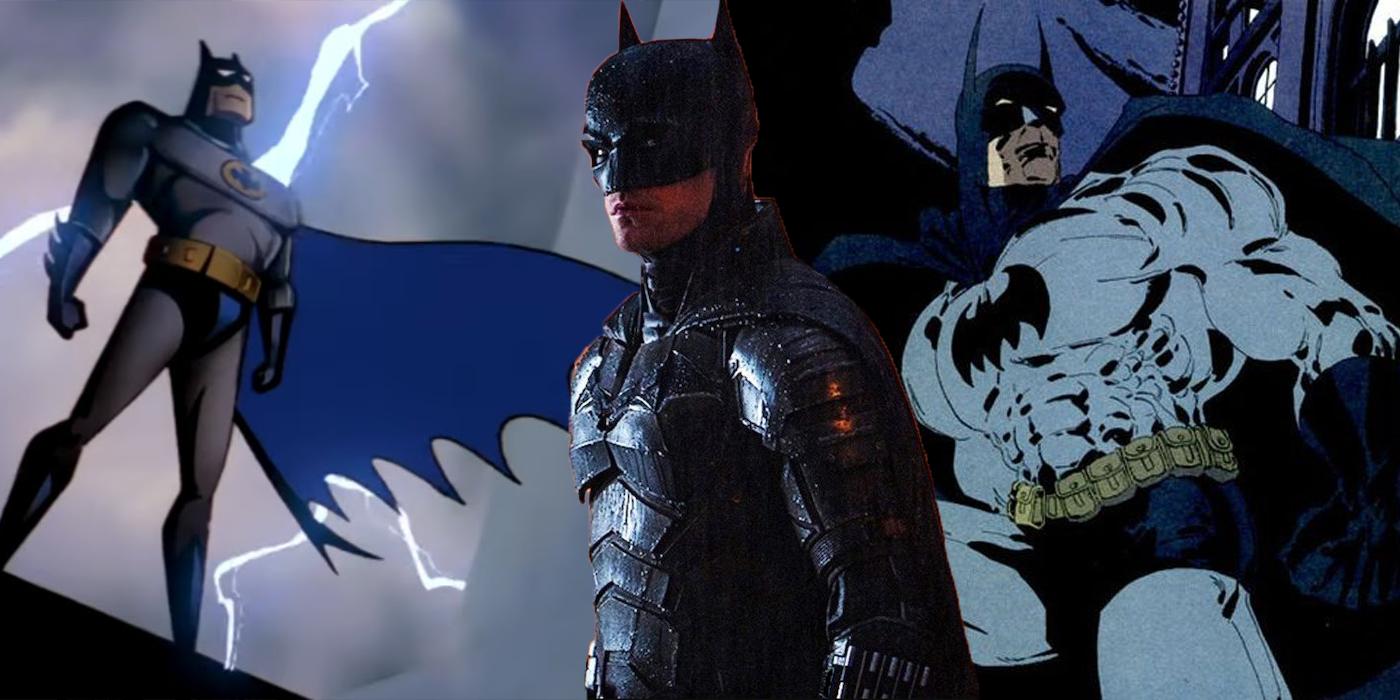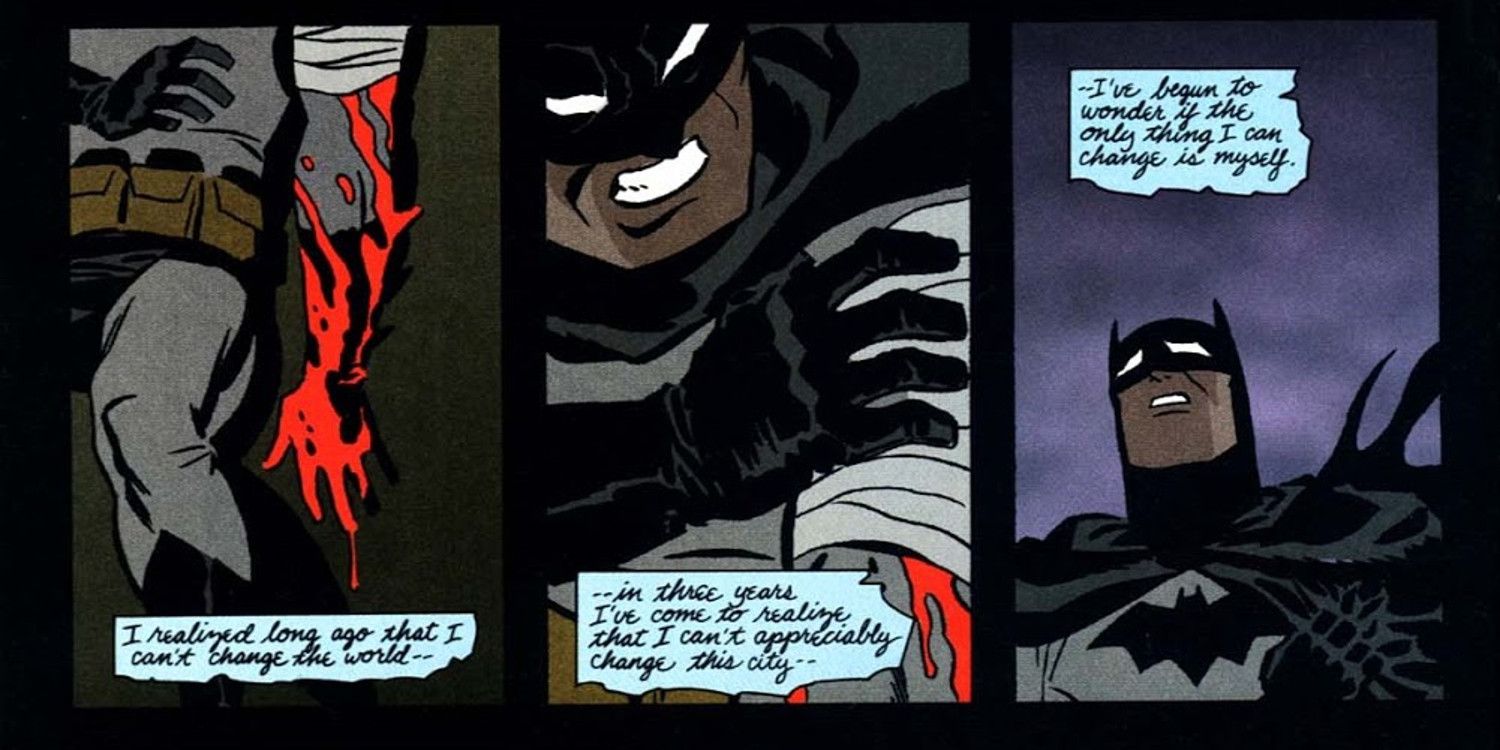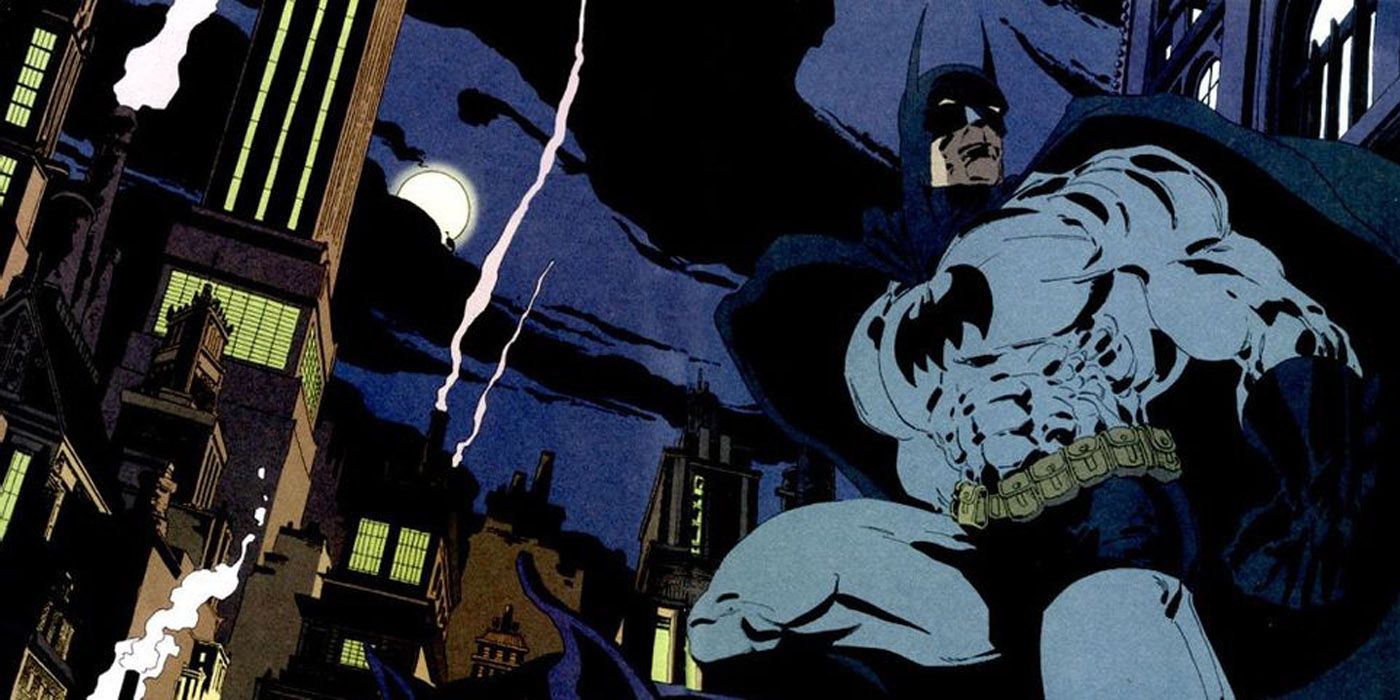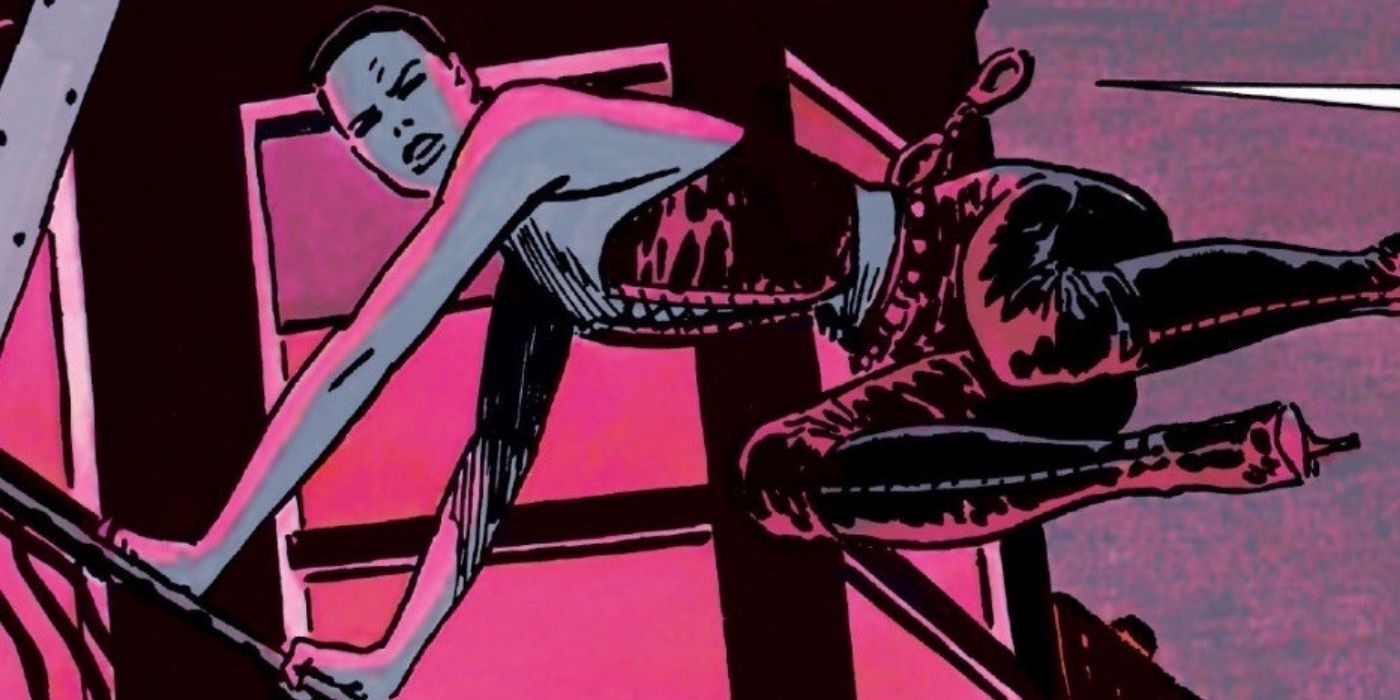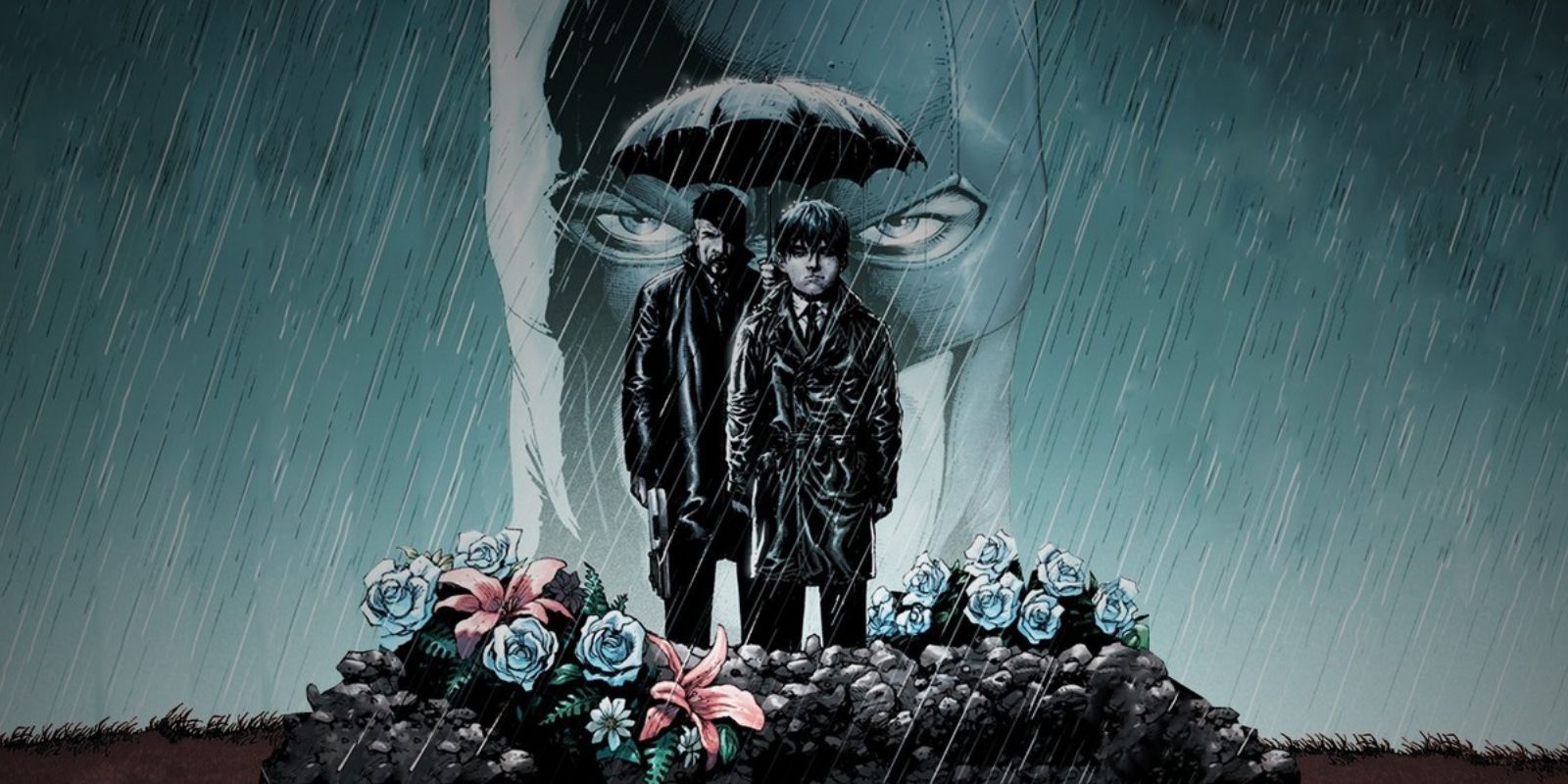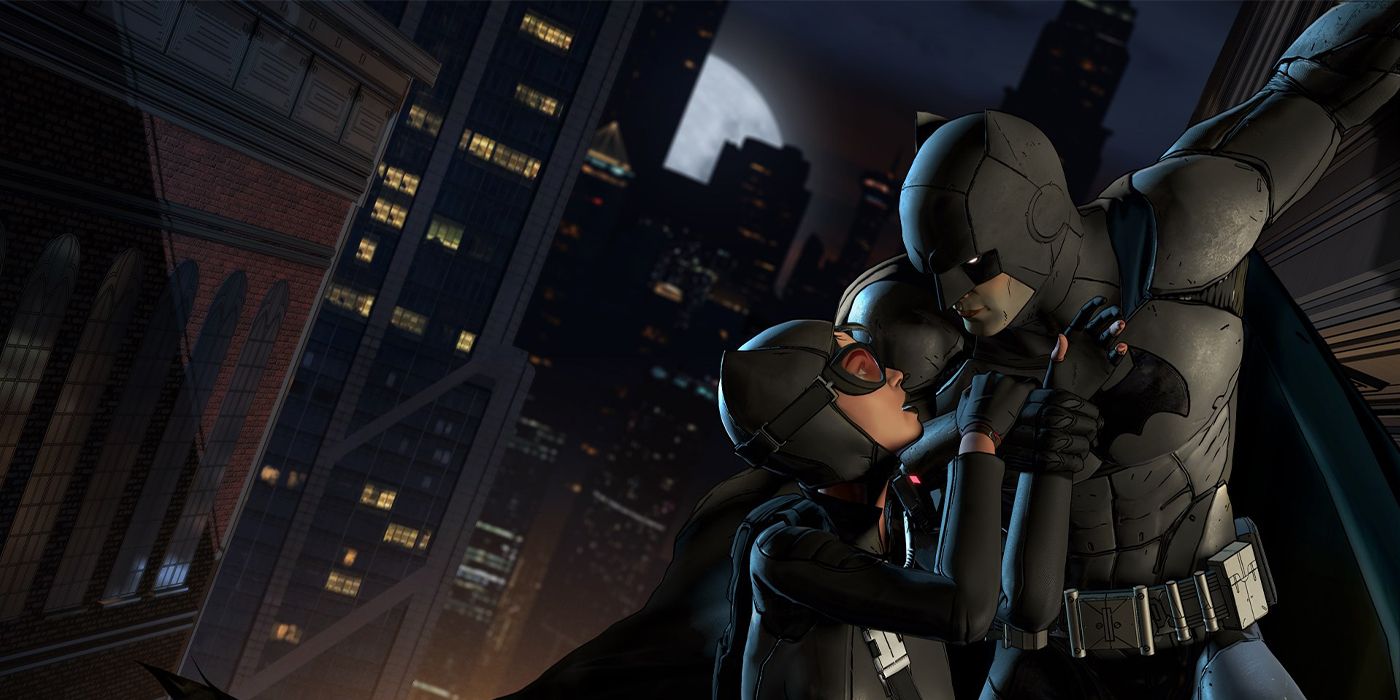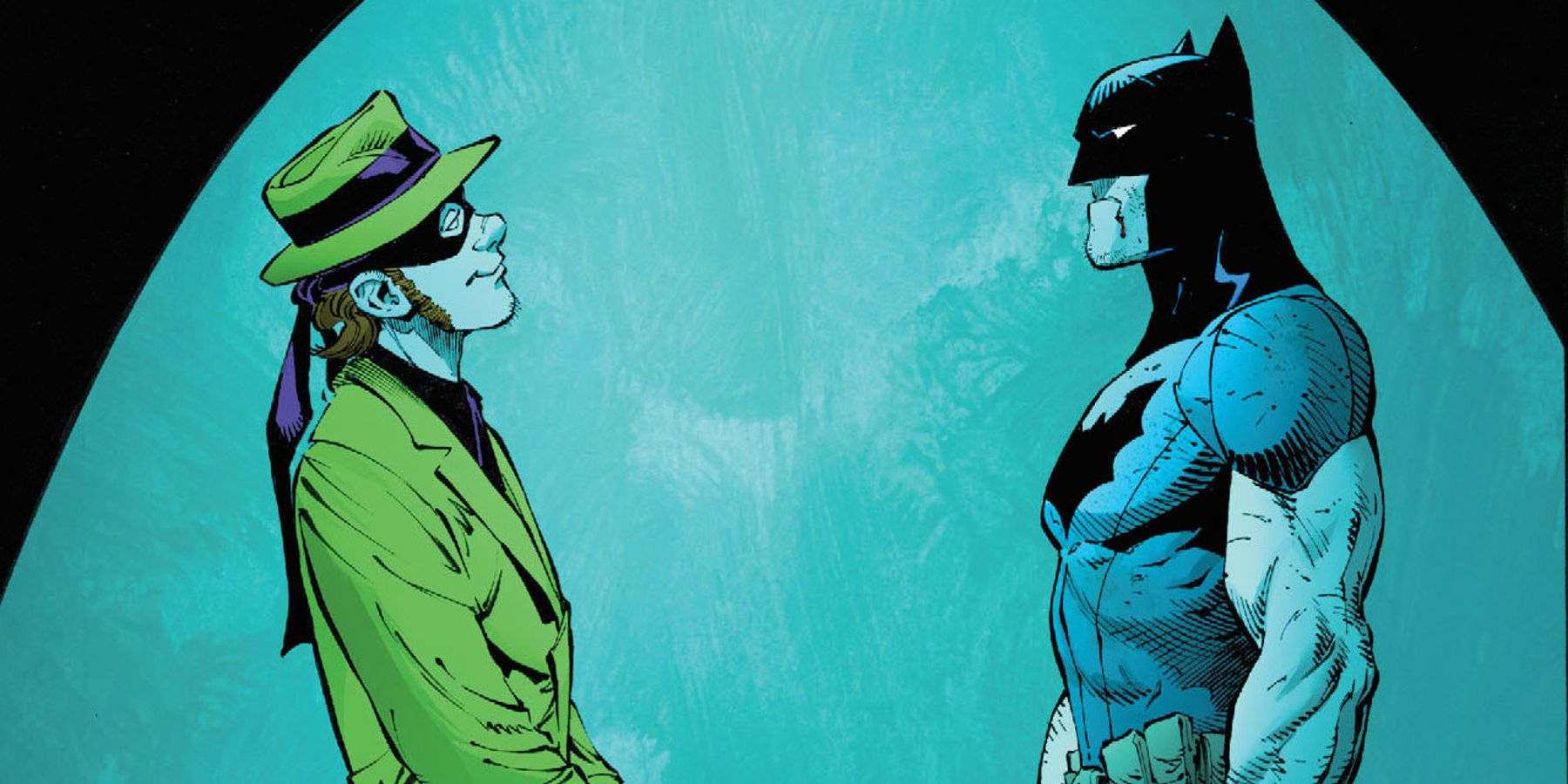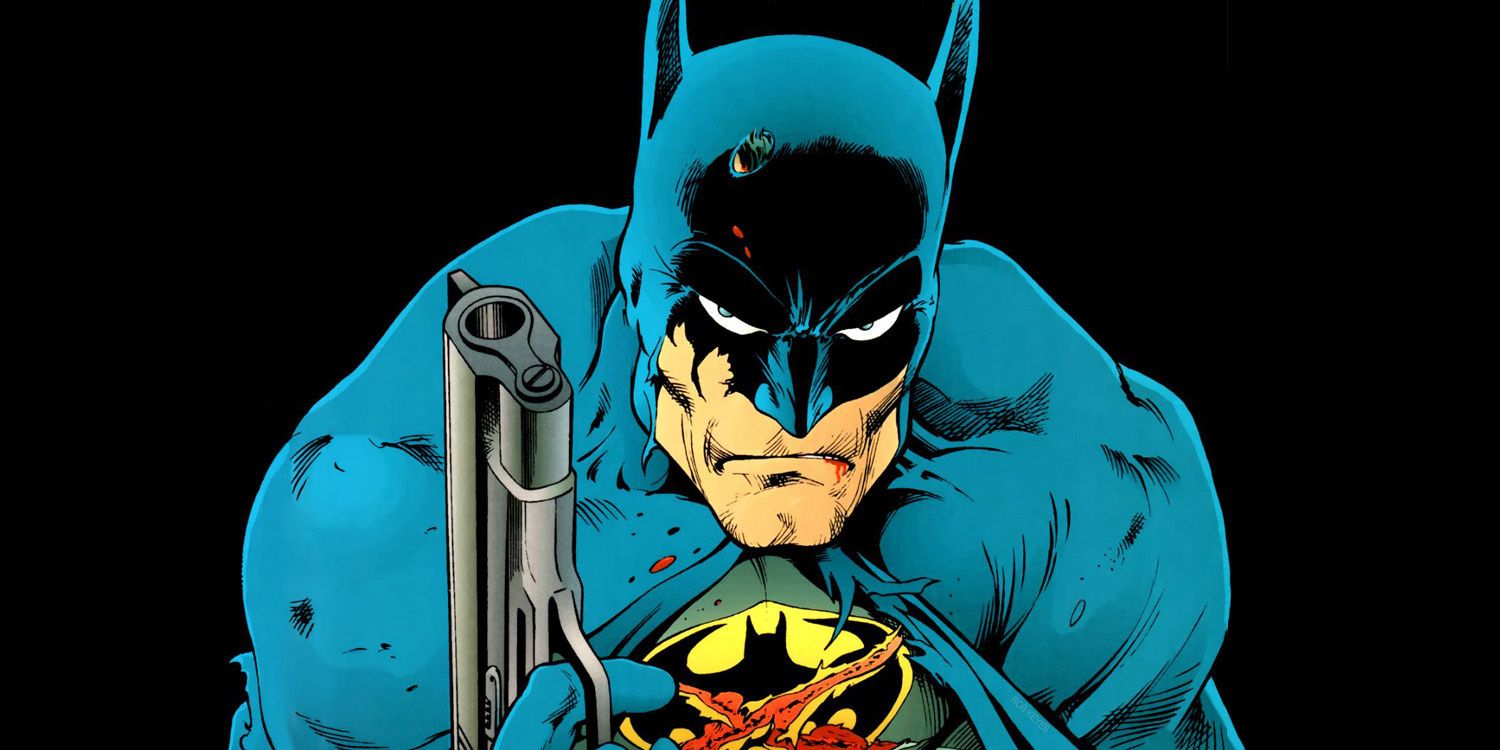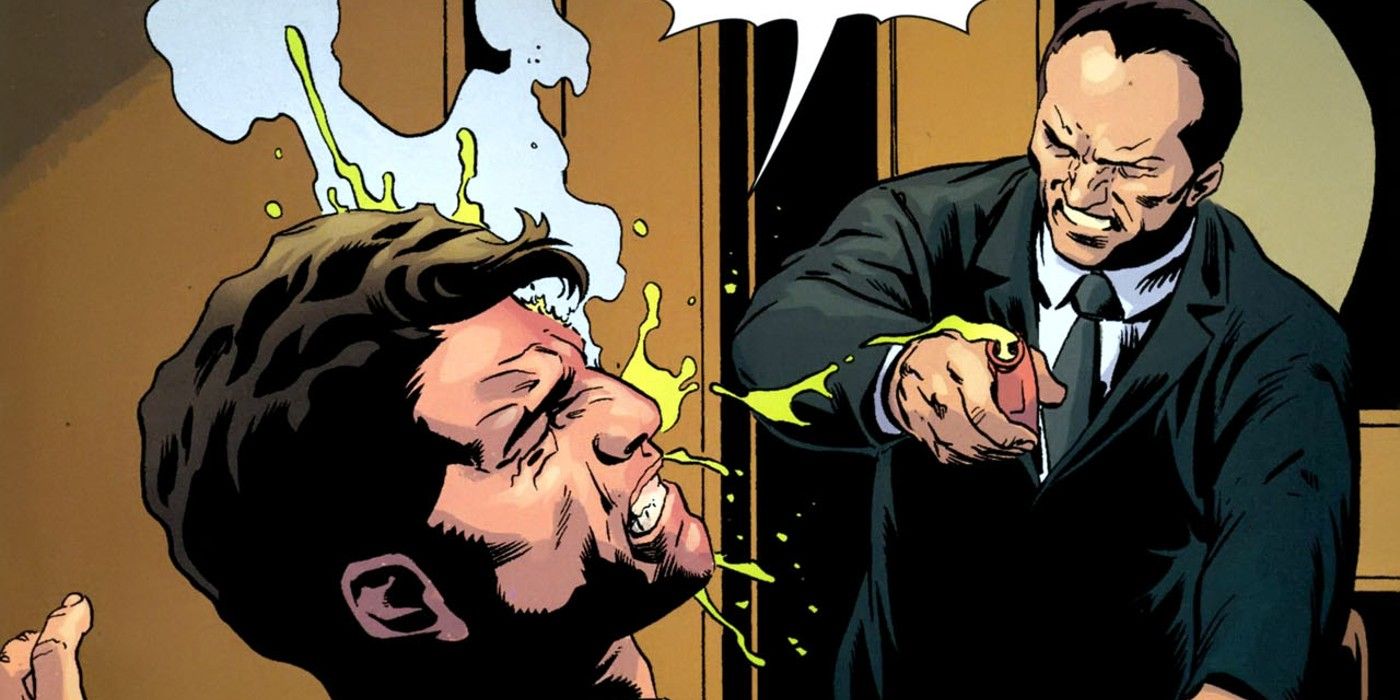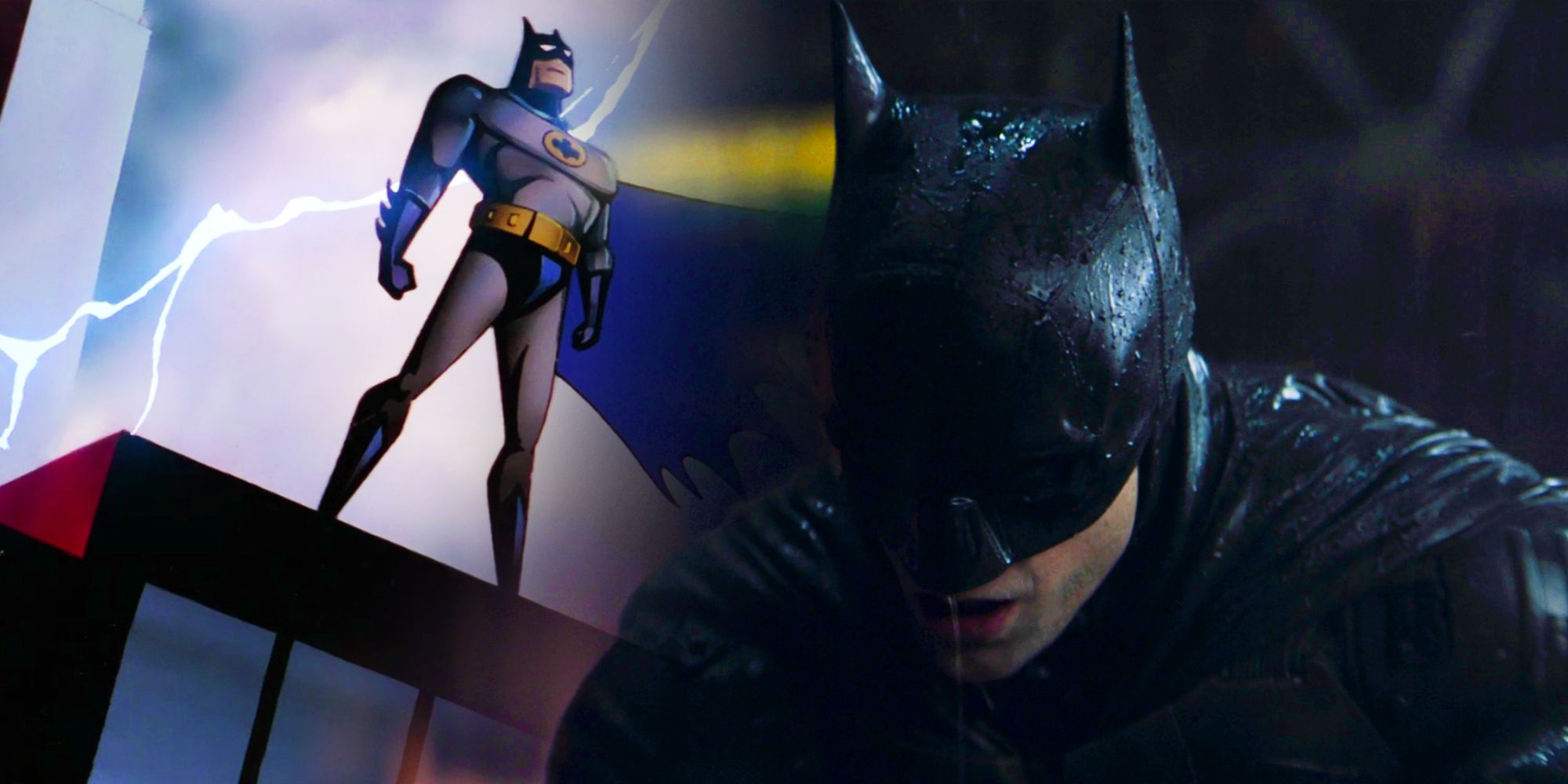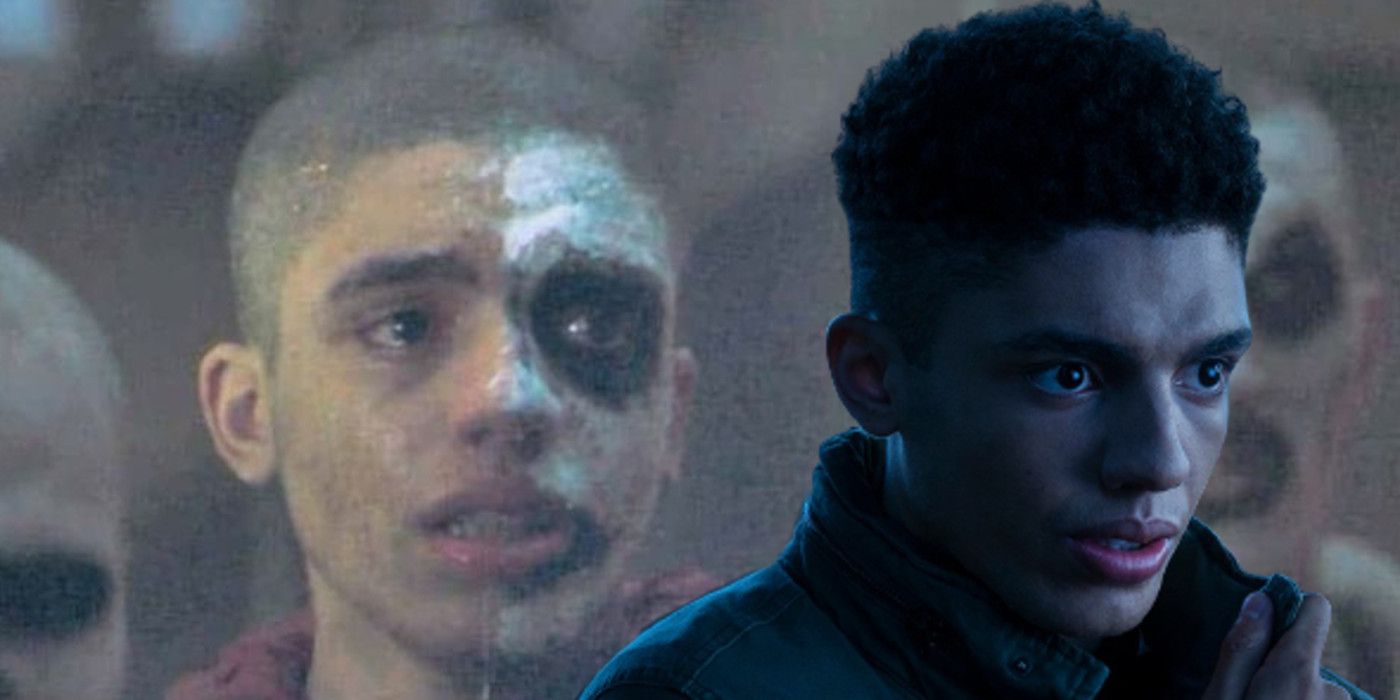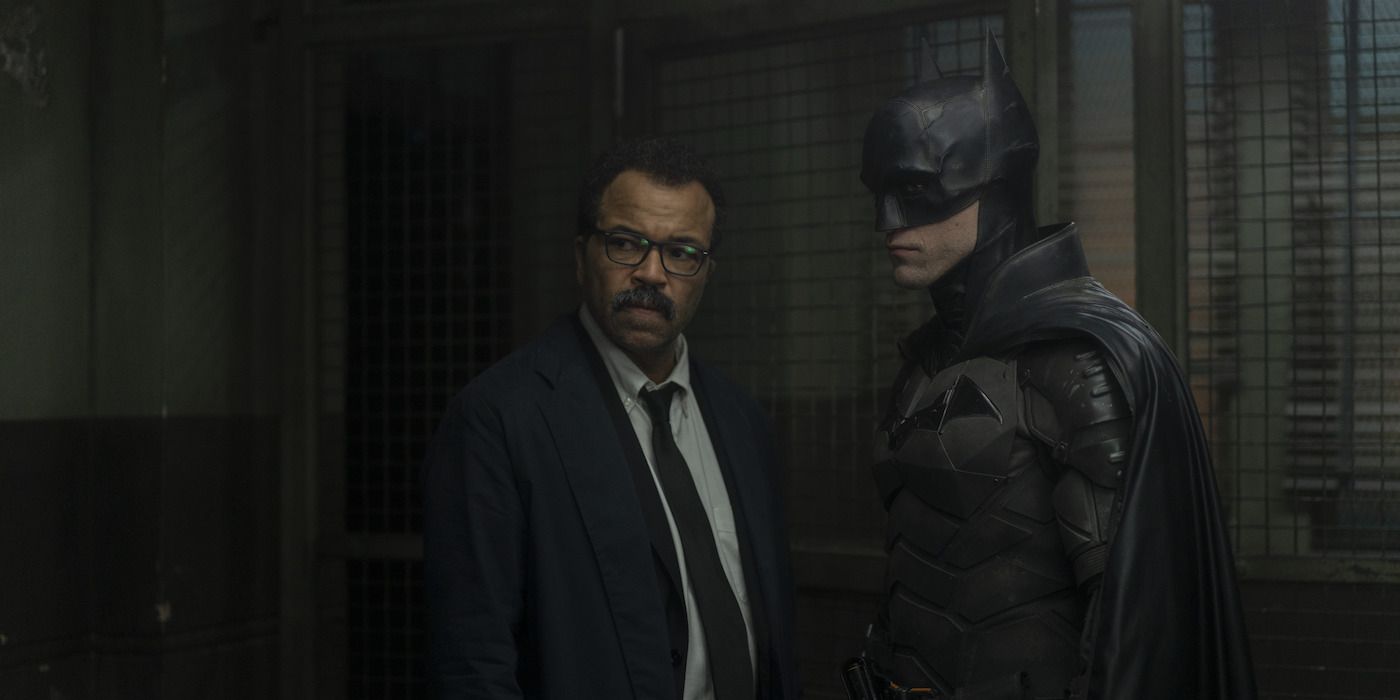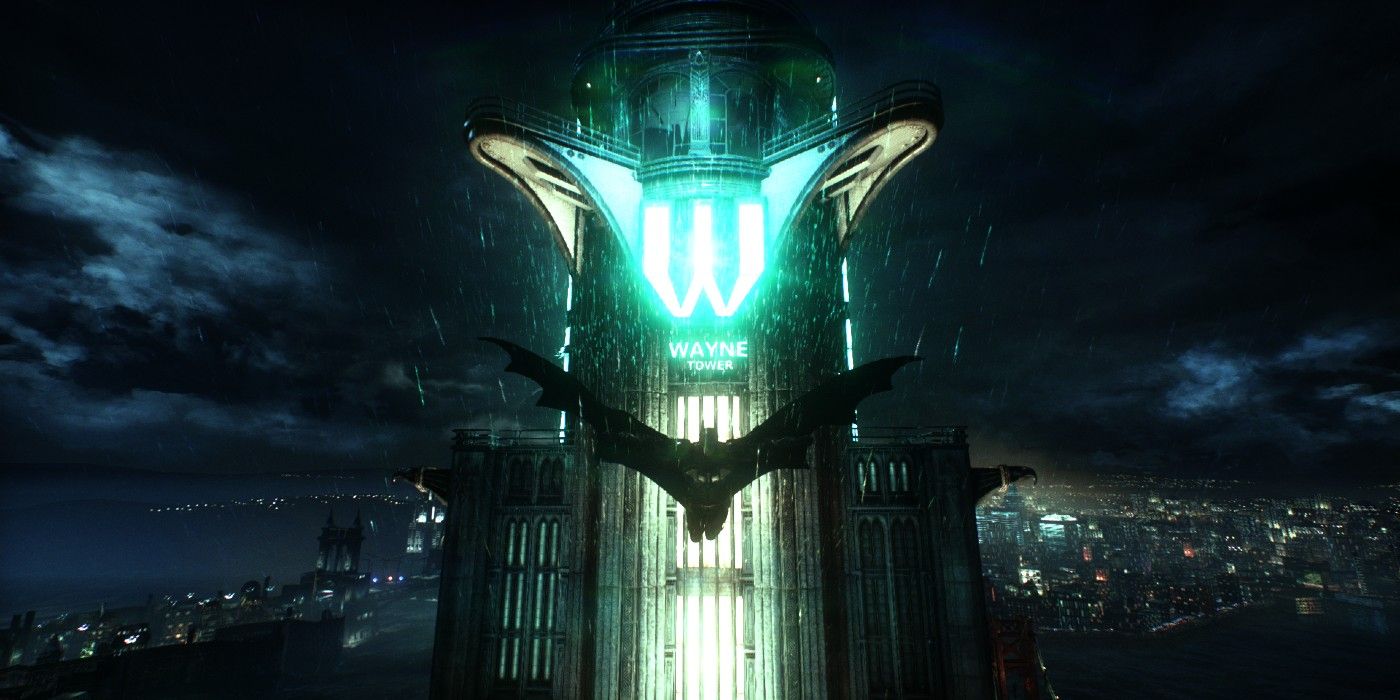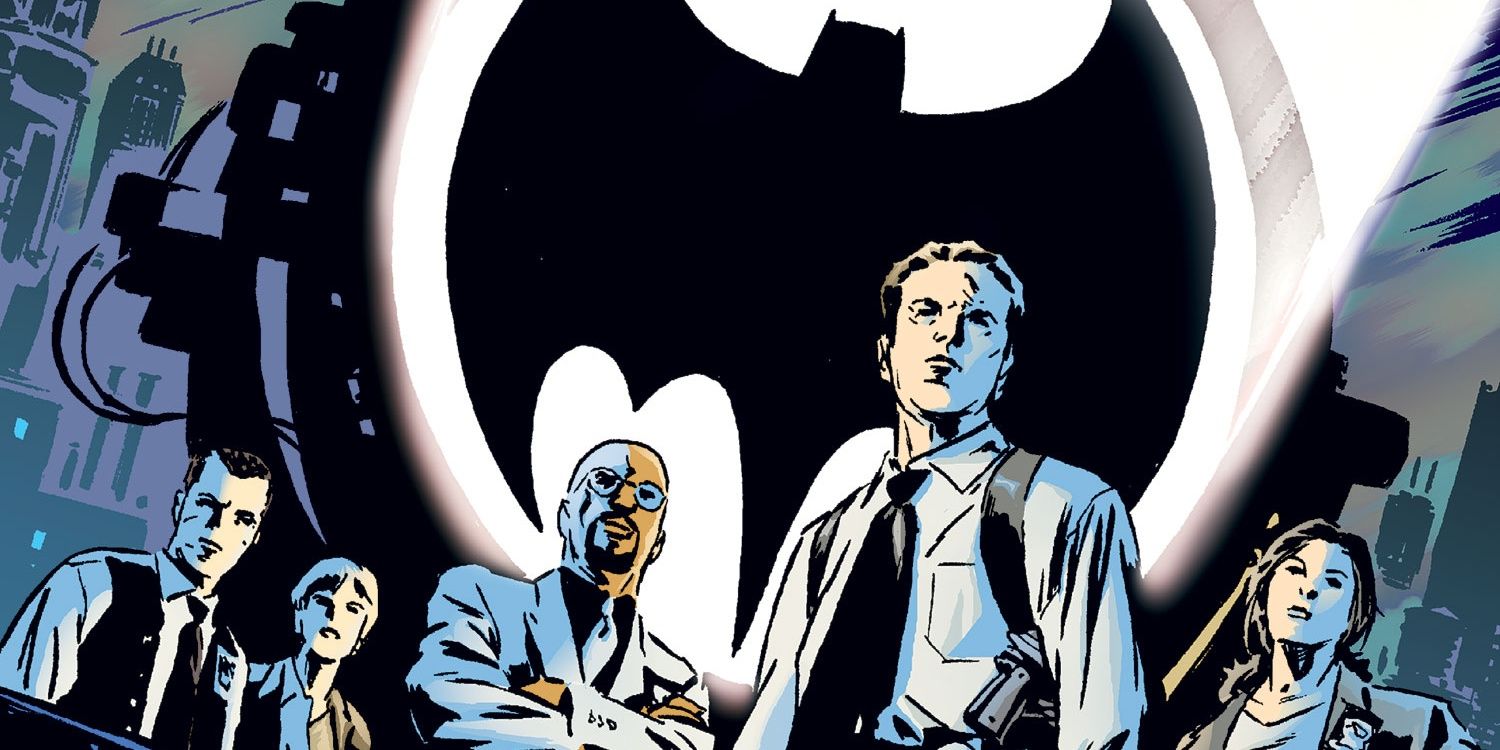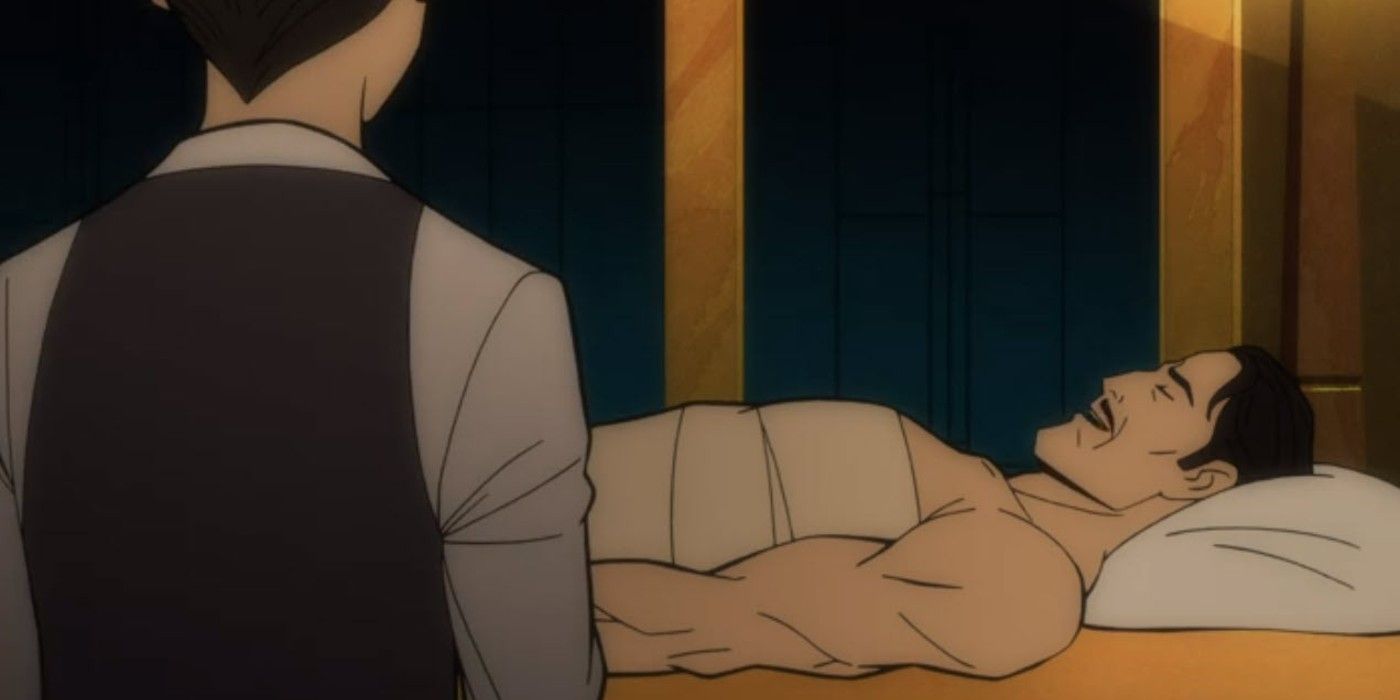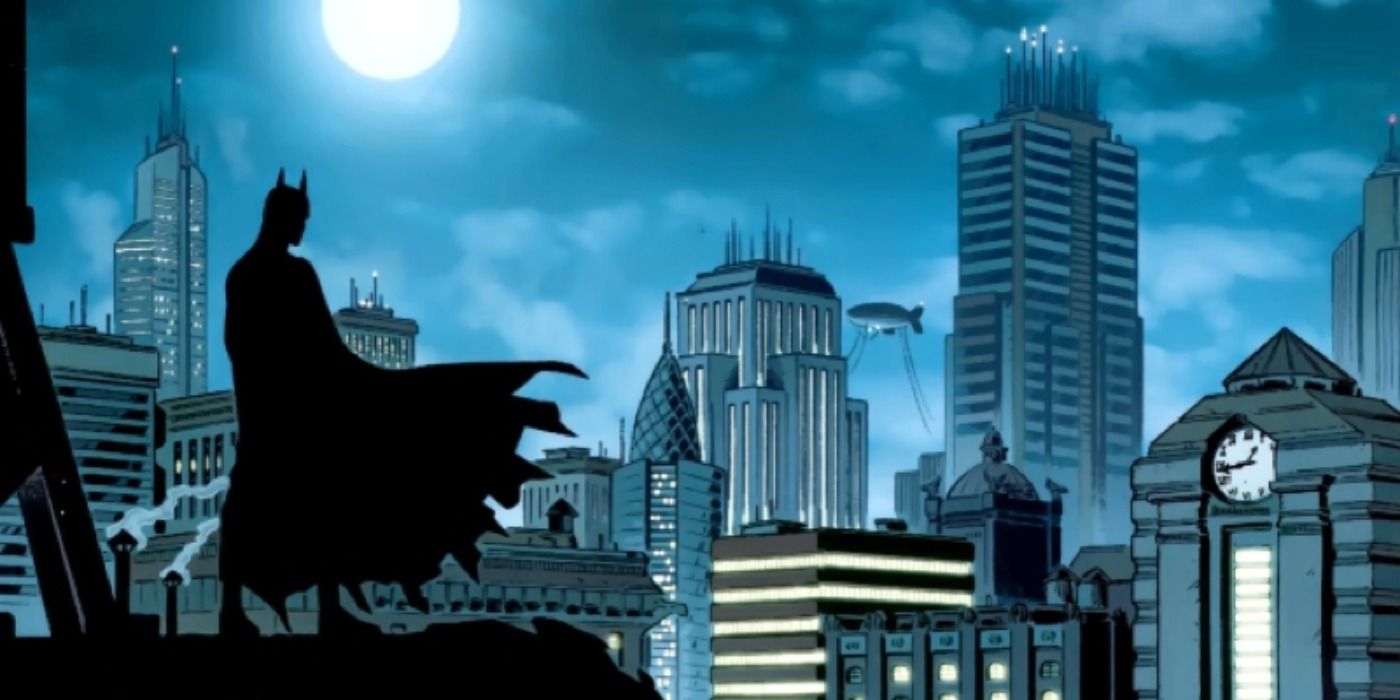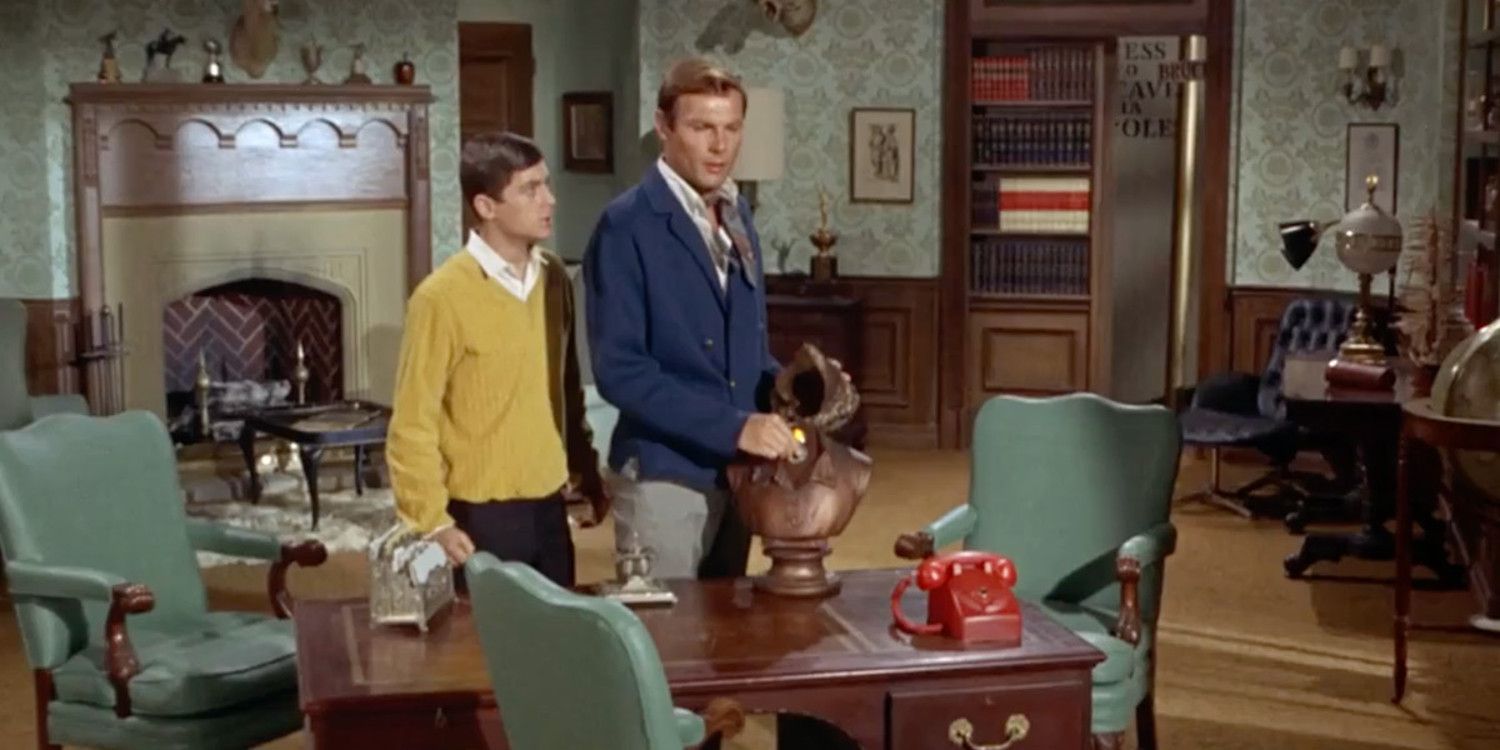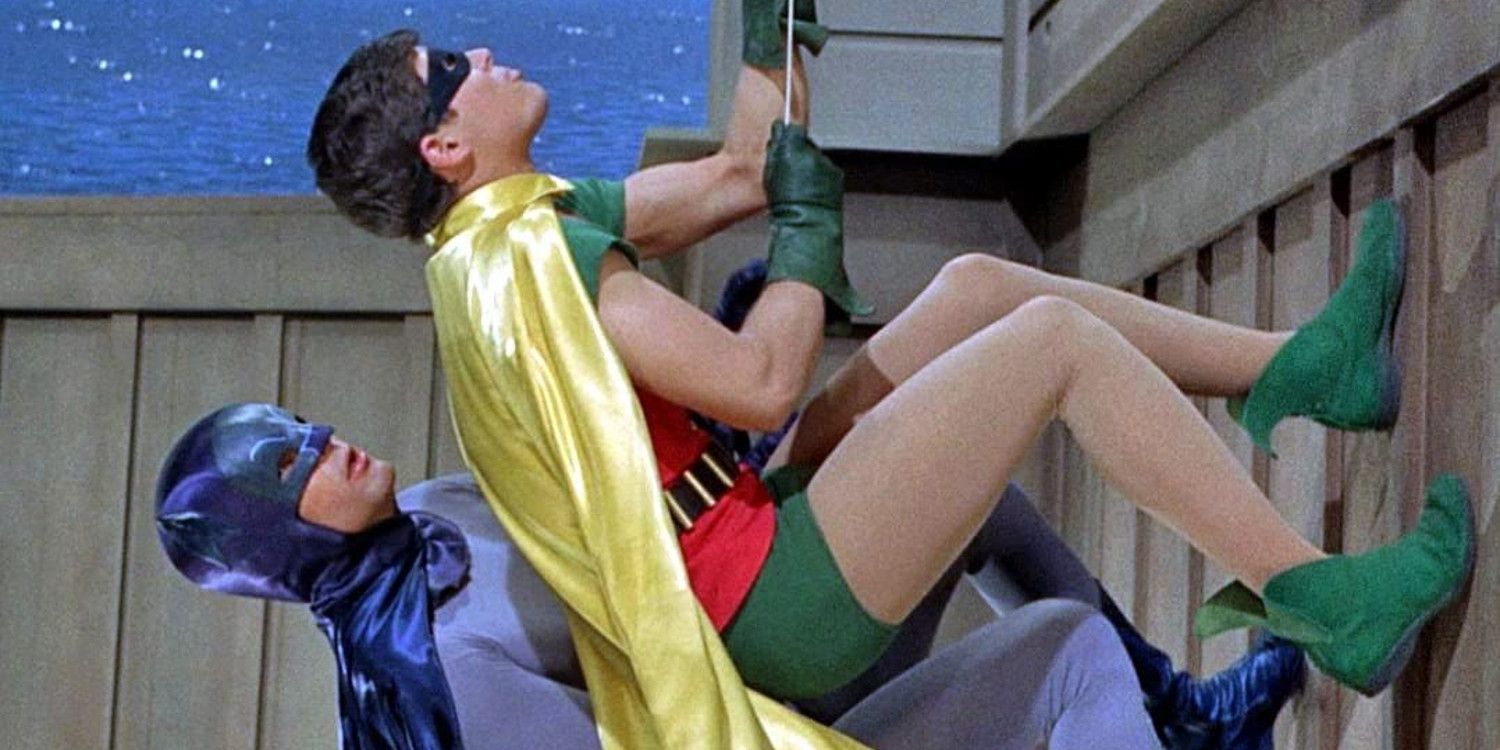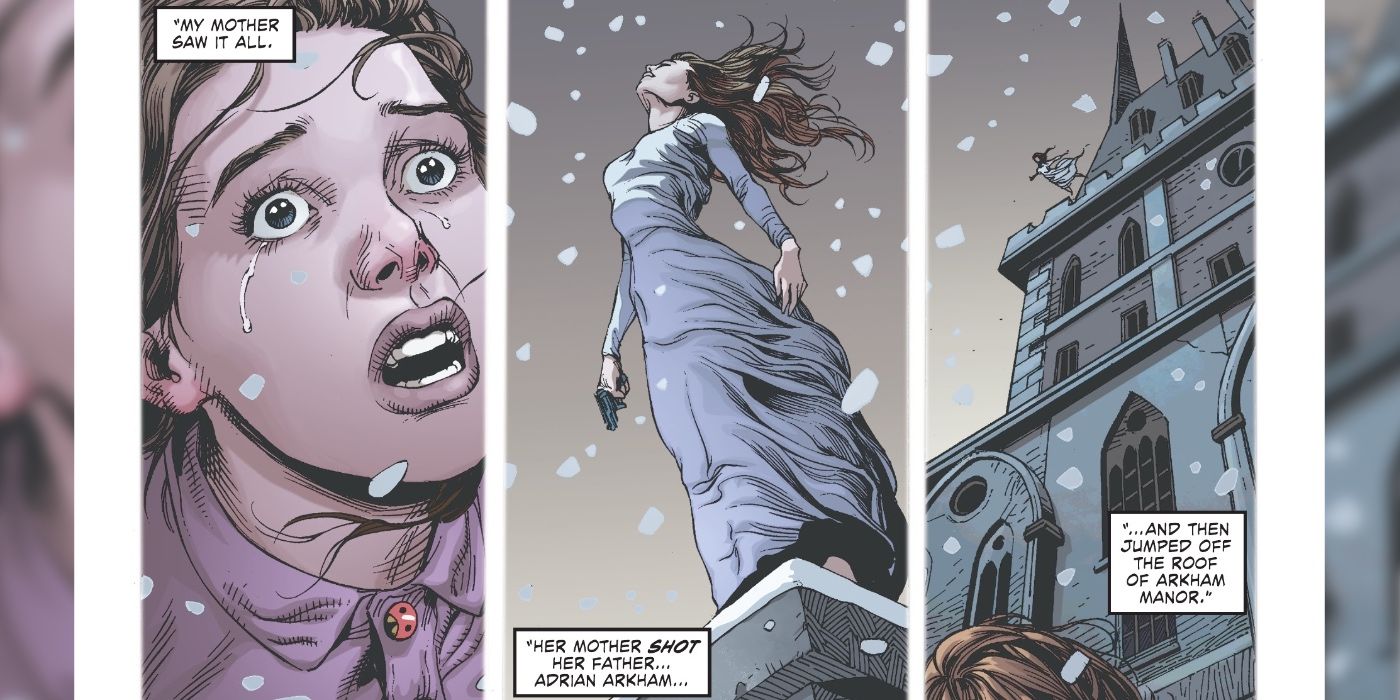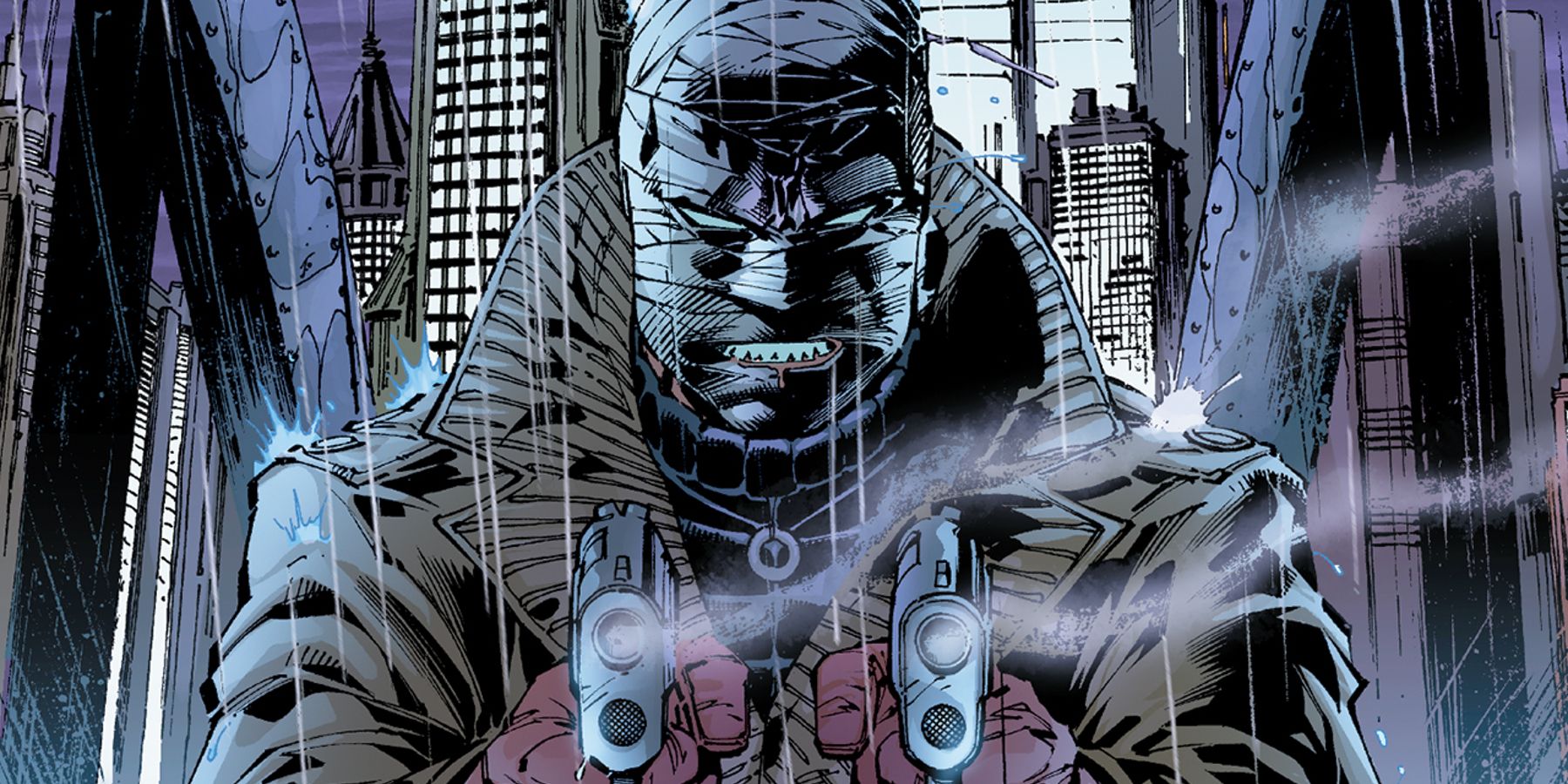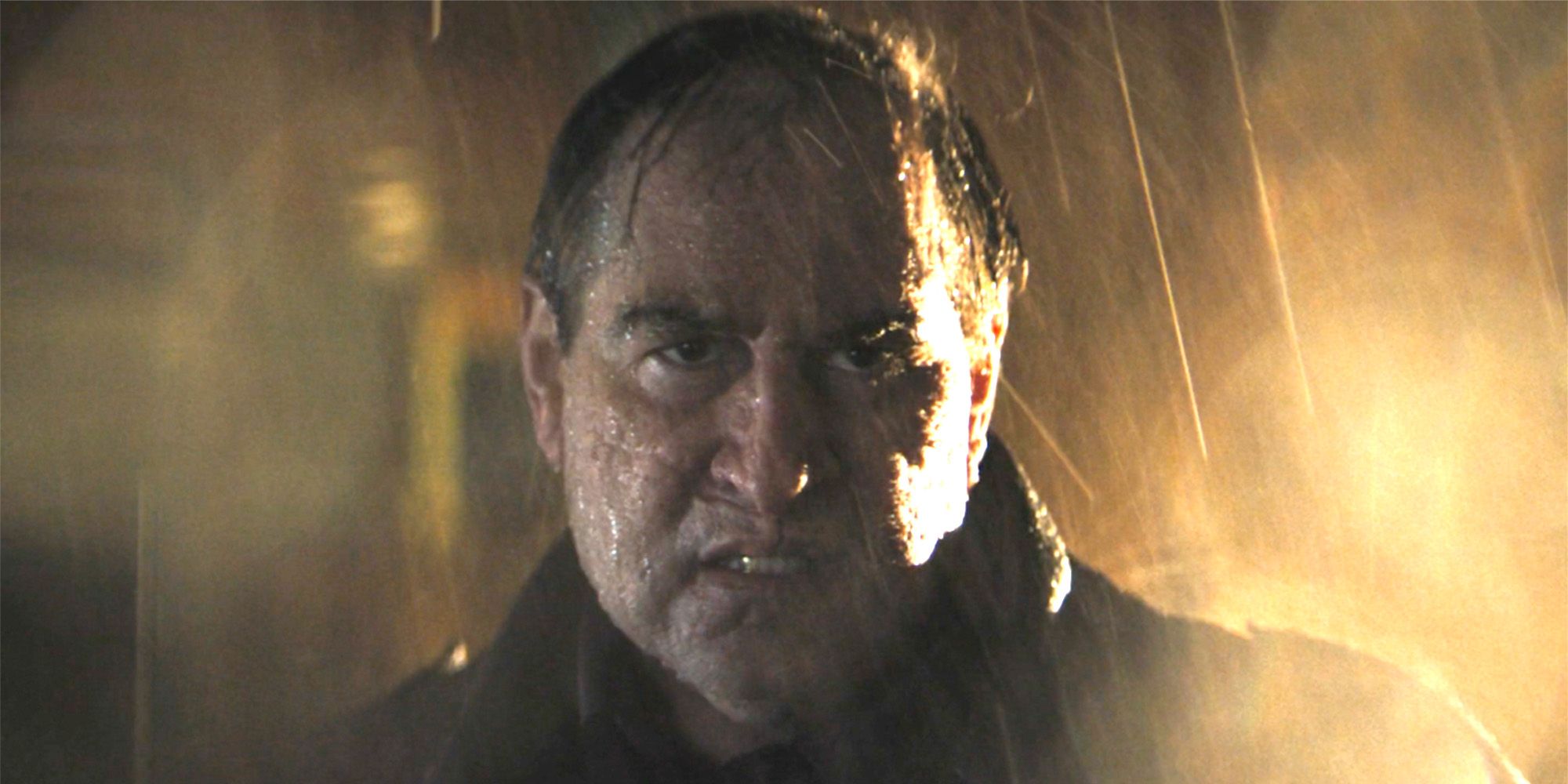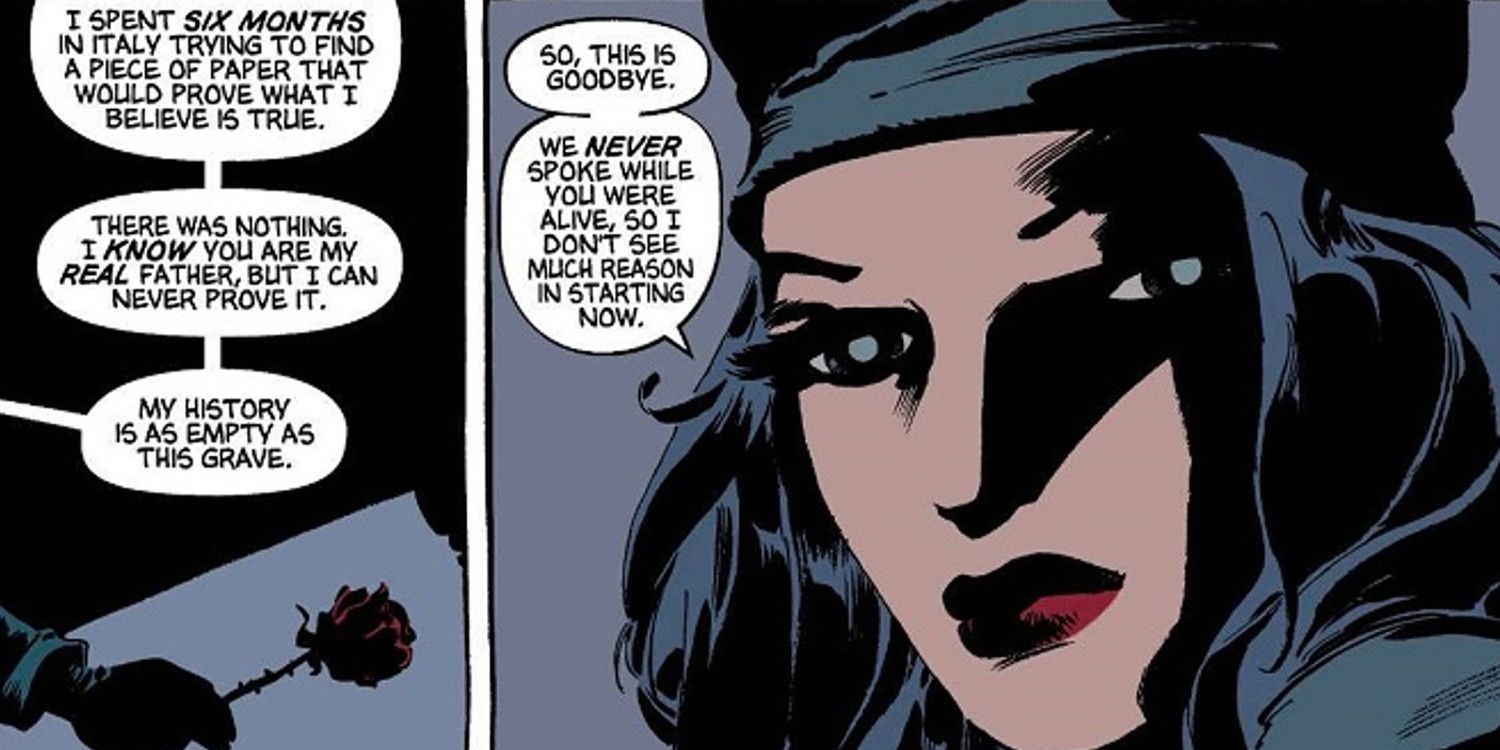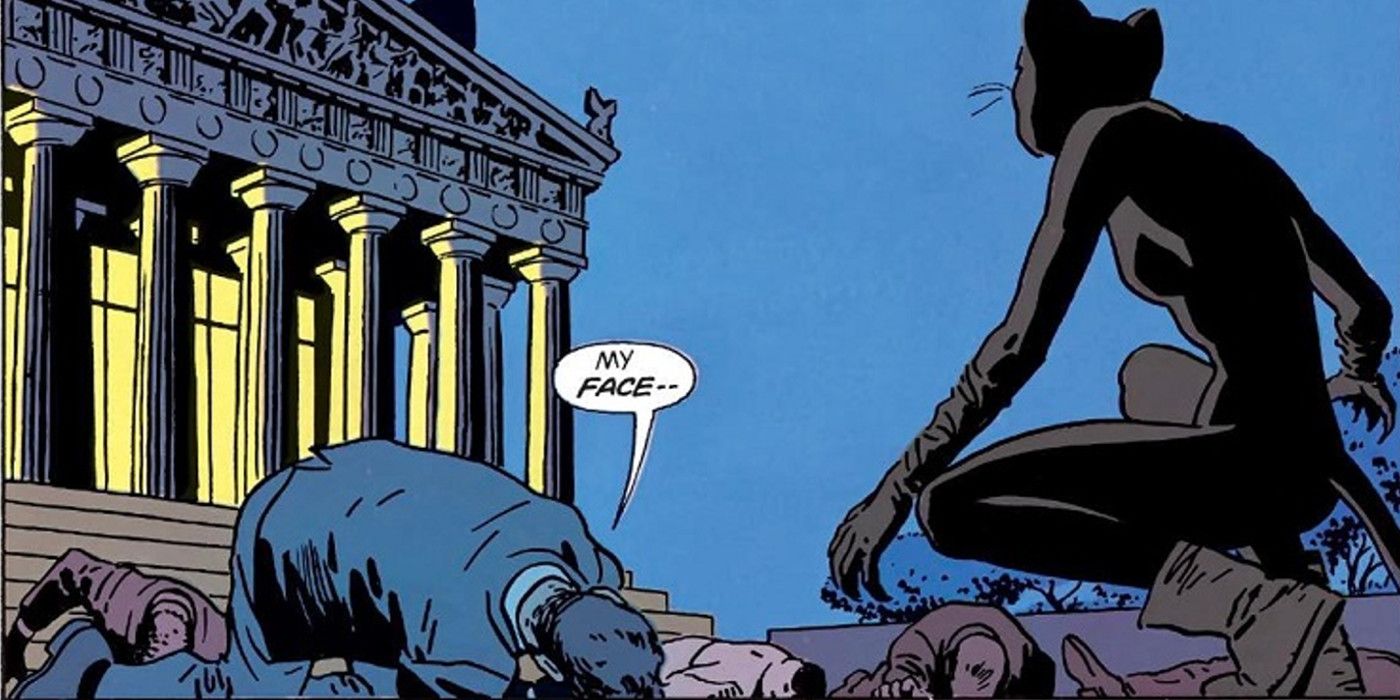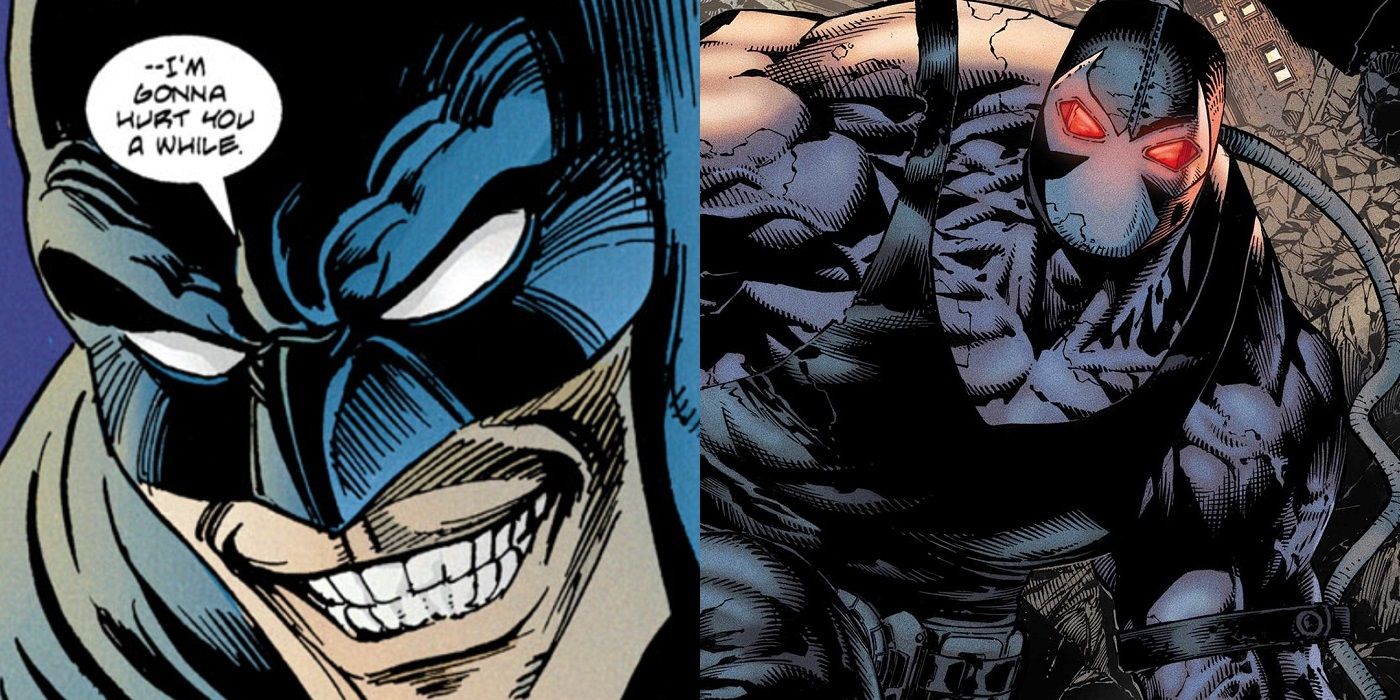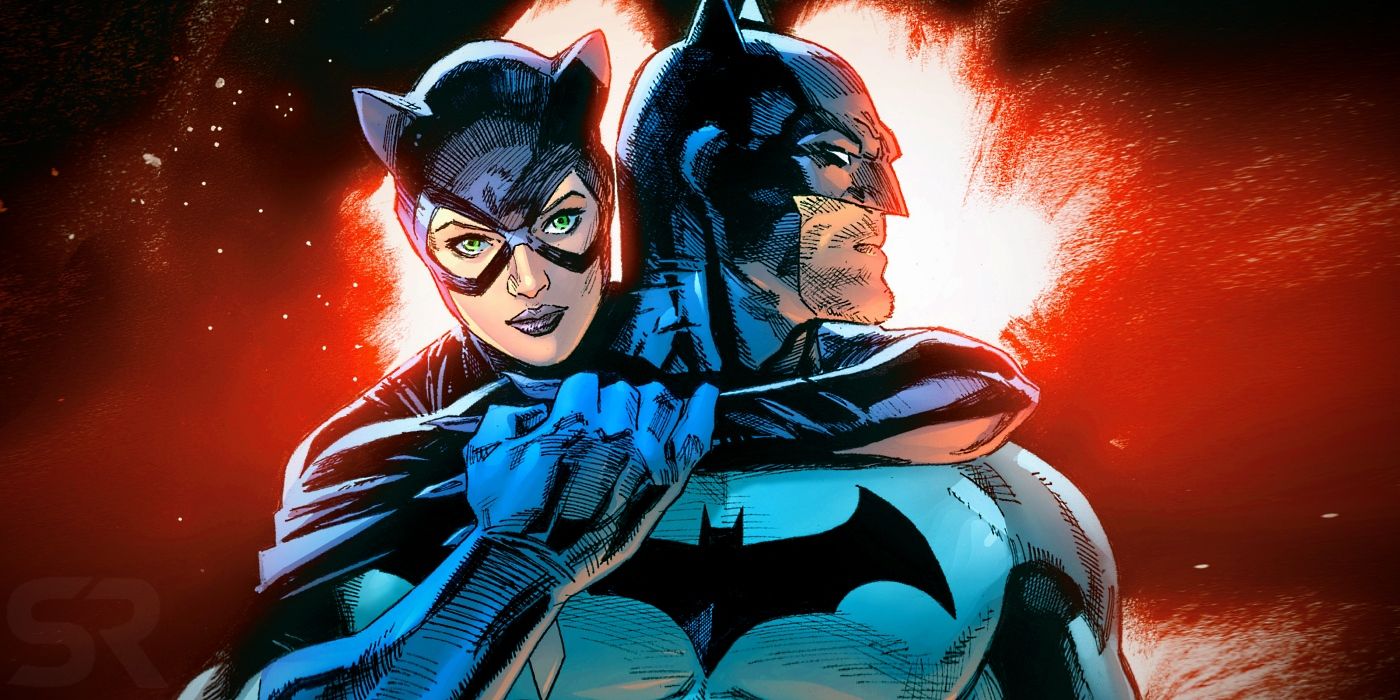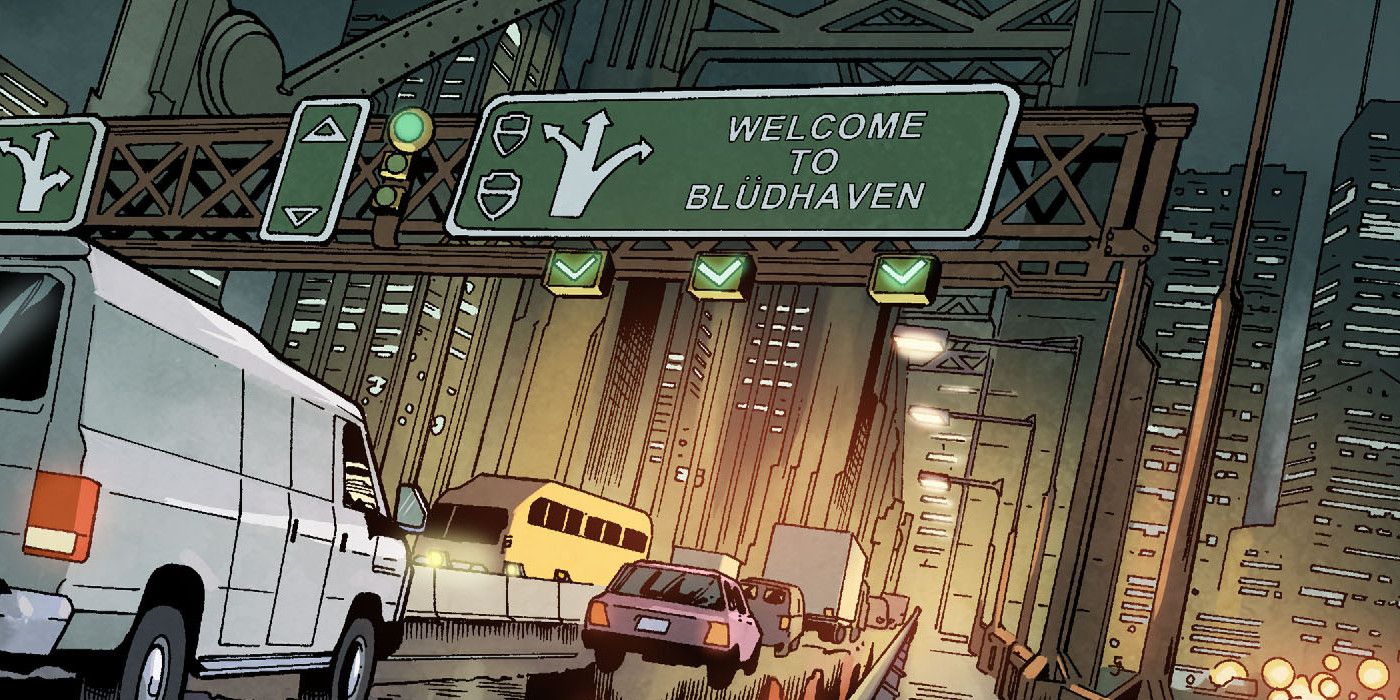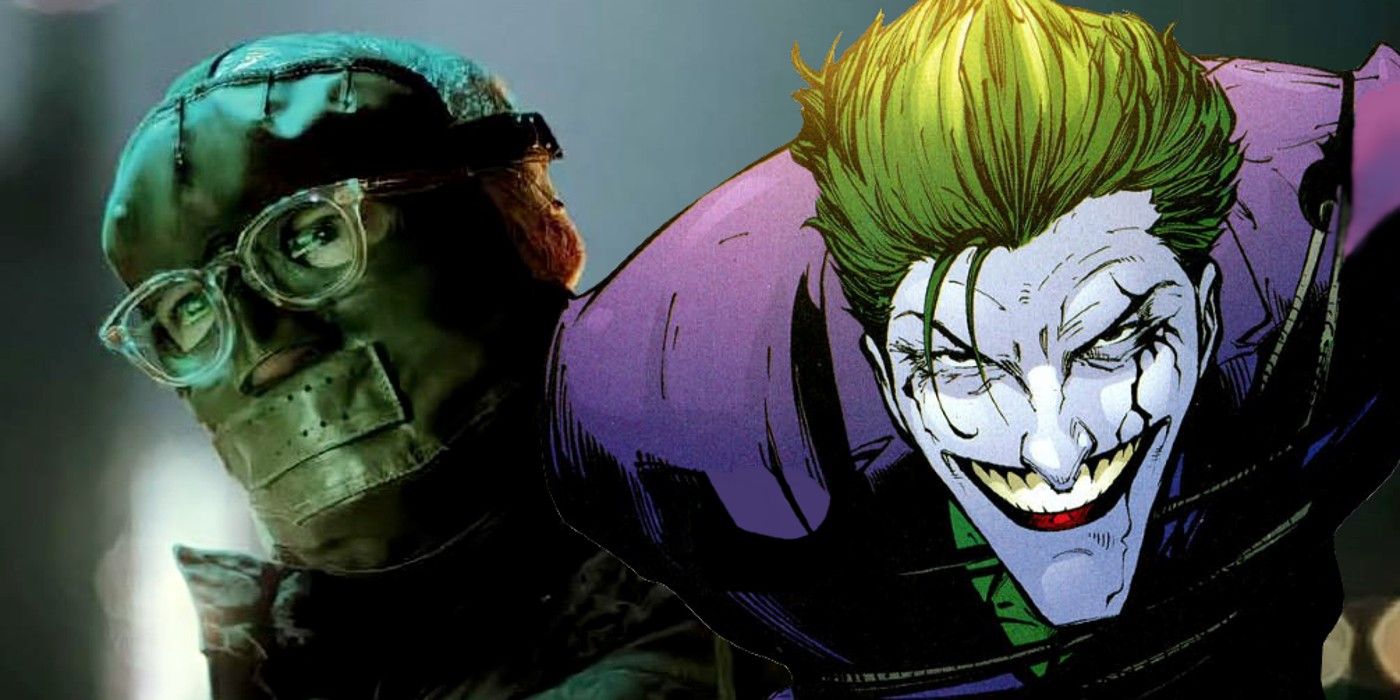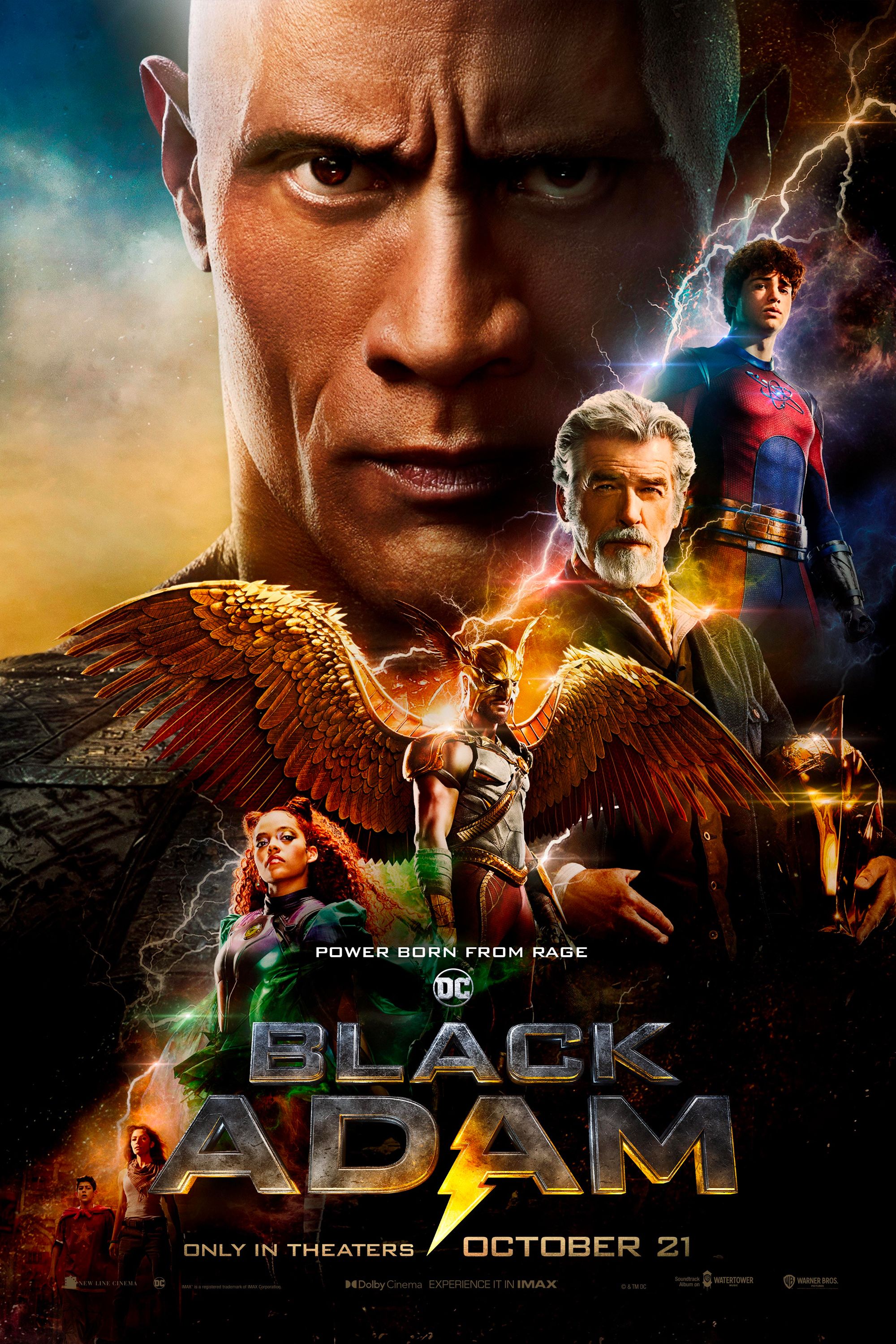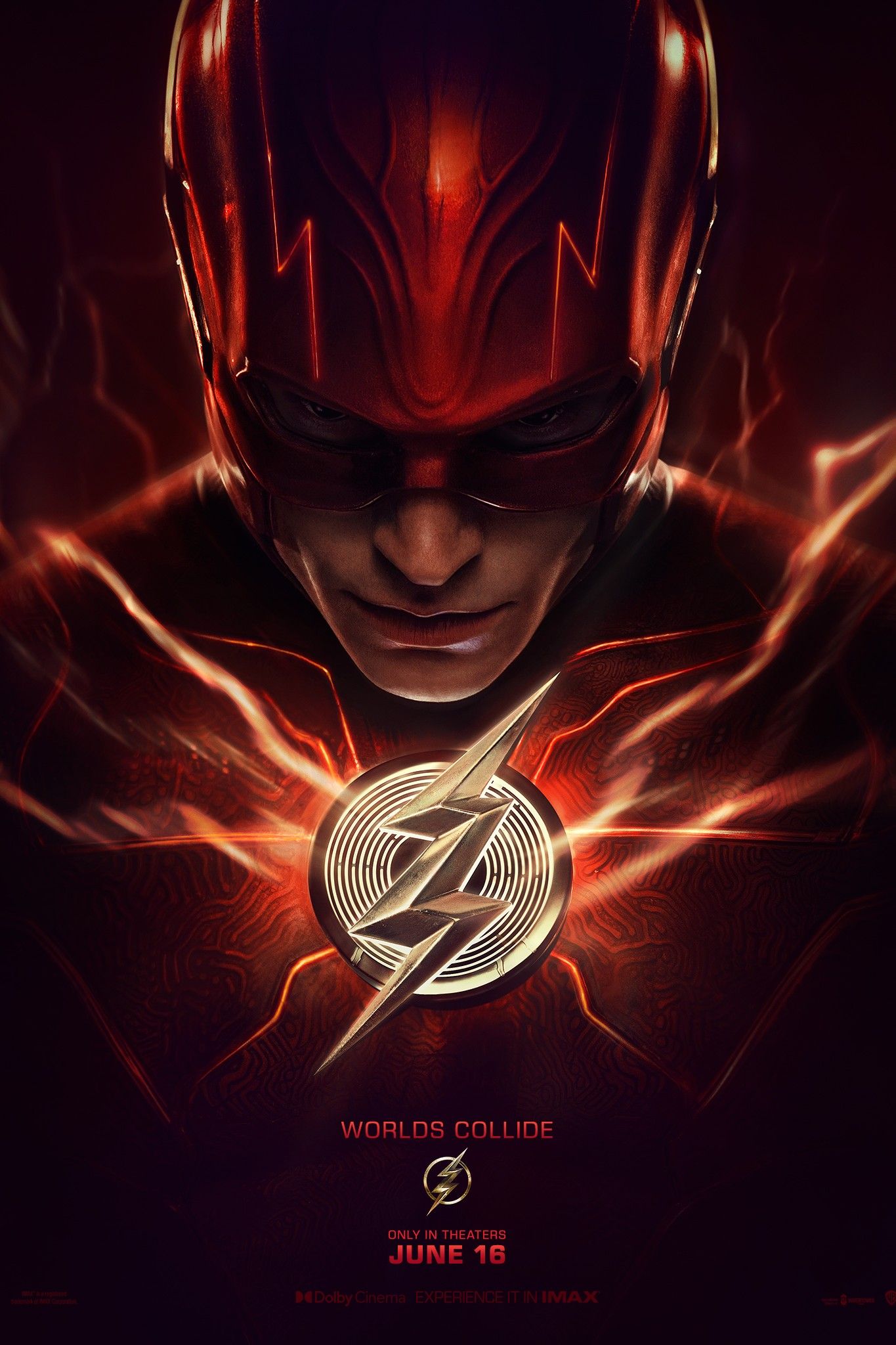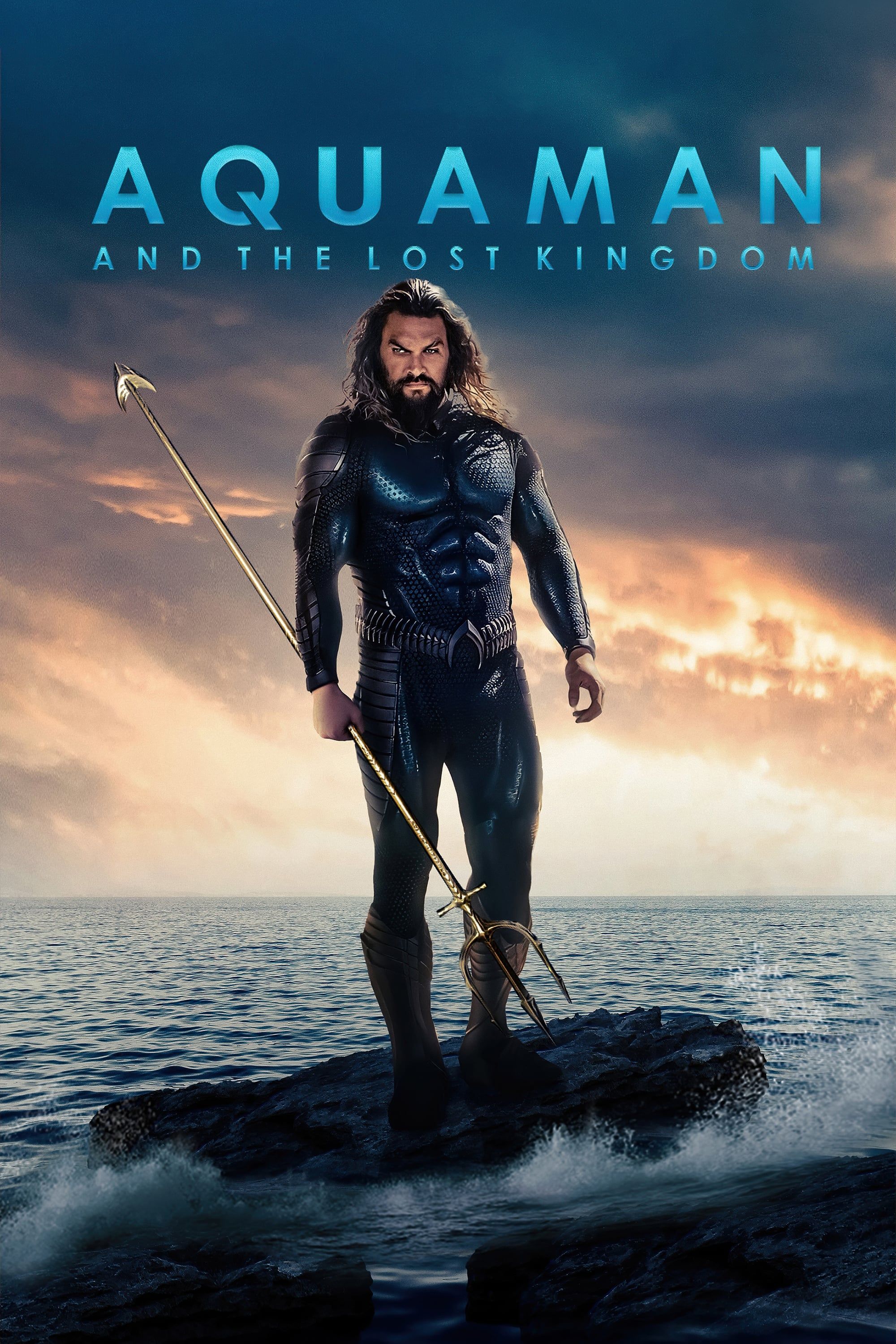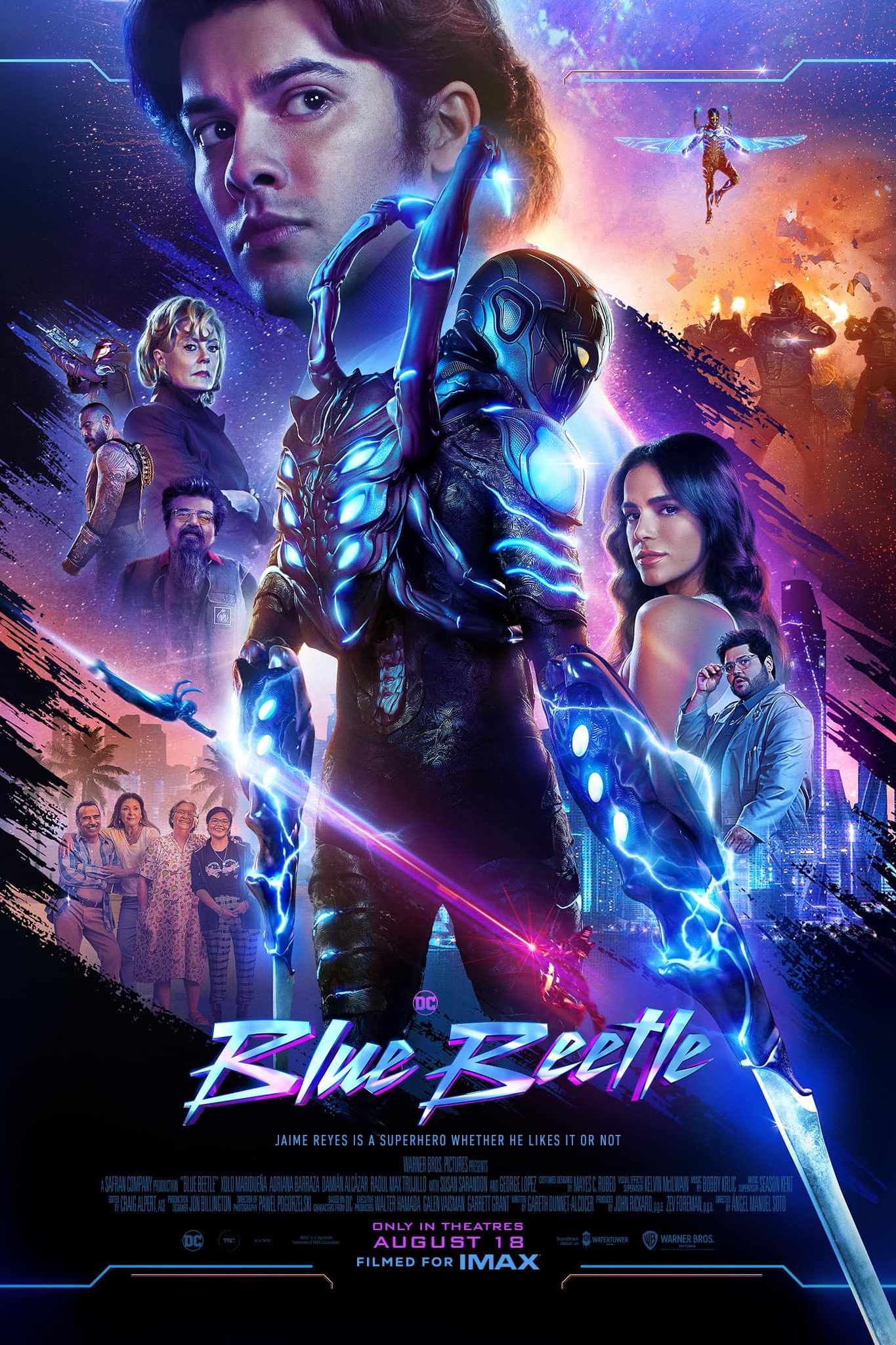Warning: The following contains SPOILERS for The Batman.
The Batman contains a large number of Easter eggs and references to the original DC comic books that inspired the movie. These range from specific costume designs and character notes, to plot elements and themes. Even the most dedicated of Bat-fans will need several viewings to spot them all.
Set in the second year of Bruce Wayne's vigil, The Batman offers perhaps the most cerebral cinematic take on the Dark Knight yet. The main story pits Batman against the clue-loving villain, Riddler, whose riddles point the way to a conspiracy of corruption orchestrated by the most powerful people in Gotham City. This leads Batman to question both his methods and his efficiency, ultimately making a fateful choice about who he is and how he will approach his mission in the future.
Director Matt Reeves has been outspoken regarding his influences in co-writing The Batman, citing his film school professor Jeph Loeb (who is also a legendary Batman comics writer) as his primary inspiration. Yet The Batman goes beyond recreating a single author's ideas, drawing upon the rich history of Batman and paying homage to a number of classic comics and their creators. There are also a number of nods to earlier live-action interpretations of Batman, particularly the 1966 television series starring Adam West.
Click here to watch The Batman: 25 Things You Missed on YouTube
Batman: Ego
Written and drawn by comics legend Darwyn Cooke in 2000, Batman: Ego pits Batman and Bruce Wayne against each other in a psychological and philosophical battle following a bad night on the job that leaves both personalities wondering if they are truly doing any good. While many comics have explored the duality of superheroes and their secret identities, none have done so as effectively as Batman: Ego. The Batman borrows heavily from the base concept and Cooke's first-person narration in its treatment of Bruce Wayne. This is most evident in the film's finale, where Batman, as in Ego, resolves to be a symbol of hope as well as fear.
Batman: The Long Halloween
Originally published across 13 issues in 1996-1997 and recently adapted into a two-part animated movie, The Long Halloween by writer Jeph Loeb and artist Tim Sale is widely considered to be one of the best Batman stories of all time. Set in the second year of Batman's career, the story finds him establishing a tentative partnership with Lieutenant Jim Gordon and District Attorney Harvey Dent, as they track a mysterious killer dubbed Holiday, who murders members of the Falcone crime family on holidays. While not adapting its story exactly, The Batman also centers around a series of killings targeting the people who really run Gotham City, with the first murder taking place on Halloween night. The Batman also delves into the uneasy partnership between Batman and Jim Gordon and how it first developed into the unbreakable bond they had in later years.
Batman: Year One
Written by Frank Miller with illustrations by Dave Mazzucchelli in 1987, Batman: Year One established a new origin story for Batman following the Crisis on Infinite Earths event that reset DC Comics' history. The Batman borrows heavily from Batman: Year One in its development of Selina Kyle, who has the same background as her comic book counterpart. Zoë Kravitz also sports the same short haircut that Selena Kyle had in Batman: Year One and many of her costumes seem to have been taken directly from Dave Mazzucchelli's designs.
Batman: Earth One
DC Comics' Earth One line was intended to tell new stories featuring popular superheroes in a graphic novel format that was less dependent on continuity and more accessible to new readers and casual fans. The Batman: Earth One series developed by former DC Comics CCO Geoff Johns and artist Gary Frank presented the idea that the murder of Bruce Wayne's parents might have been political and tied to Thomas Wayne's campaign for Mayor of Gotham City. The Batman features the same idea, but also borrows heavily from Batman: Earth One's version of Alfred Pennyworth, who served as the head of Thomas Wayne's security detail rather than being his butler. Andy Serkis' Alfred sports a neatly-trimmed beard reminiscent of Gary Frank's design for the Earth One Alfred and is also shown to walk with a cane. The Batman also borrows from Earth One's depiction of the Bruce Wayne/Alfred Pennyworth relationship and its version of the Riddler, who was a serial killer obsessed with Batman rather than a riddle-loving robber.
Batman: The Telltale Series
Many Batman comics hinted at Thomas' and Martha Wayne's murders being tied to their dark pasts which caused their violent slaying to be disguised as a common mugging, but none of them ultimately suggested the Waynes were guilty of the crimes of which they were accused. The Batman: The Telltale Series video games were unique in exploring what had only been hinted at in the comics at that time, forcing Bruce Wayne to confront his father's connections to the organized crime families of Gotham City and the revelation that his father had abused his authority as a doctor on behalf of his business partners. The Batman also explores the idea that Thomas Wayne was a willing accomplice of Carmine Falcone and borrows from the games' development of the romance between Batman and Catwoman. The final scene of The Batman, in which Selina Kyle leaves Gotham City on a motorcycle after trying to persuade Batman to abandon Gotham City, also seems to have been inspired by the ending of the first Batman: The Telltale Series game.
Batman: Zero Year
Batman: Zero Year established a new history for Batman following the 2011 New 52 reboot of DC Comics' continuity, spinning out of the monthly Batman comics by writer Scott Snyder and artist Greg Capullo. The final scene of The Batman borrows a bit from Zero Year, with Batman's existence being revealed to the world and Batman abandoning vengeance in favor of hope. The third act of The Batman, where the Riddler's sinister plan ends with a flooded Gotham City, was also taken directly from Riddler's endgame in Batman: Zero Year.
Batman: Year Two
Originally published in 1987 and written by Mike W. Barr with illustrations by Todd McFarlane and Alan Davis, Batman: Year Two placed Batman in an uneasy alliance with Gotham City's gangs in order to stop a violent vigilante called the Reaper. Beyond being set during Batman's second year as a superhero, The Batman also finds Batman questioning his methods and working with criminals like Penguin and Catwoman to end a greater evil. However, unlike the Batman of the comics, Robert Pattison's Batman remains true to his oath to avoid using guns.
Sal "Boss" Maroni
In the opening scene of The Batman, the incumbent mayor describes his efforts to bring down Boss Maroni during a televised debate. First appearing in Detective Comics #66 in 1942, Sal "Boss" Maroni was introduced as the gangster responsible for throwing acid into Harvey Dent's face, fueling his transformation into the villain Two-Face. Later stories, such as Batman: Year One and The Long Halloween, developed Maroni into the head of one of the major crime families of Gotham City, second only in power to his chief rival, Carmine Falcone. The Batman hints at a similar relationship between its versions of Carmine Falcone and Sal Maroni, whom Falcone fingers when Bruce Wayne asks him about the death of his parents.
Batman's "I Am Vengeance" Line Homages Batman: The Animated Series
While Batman's "voice" is heard during The Batman's opening narration, the first time he actually speaks comes after he prevents a skull-faced gang from killing a man in a subway station. When asked who he is, Batman replies "I am vengeance." While a similar scene occurred in Batman: Earth One, the "I am vengeance" catchphrase was first uttered in the Batman: The Animated Series episode "Nothing To Fear," where Batman first encountered the Scarecrow. Dosed with Scarecrow's trademark fear toxin, Batman began to hallucinate his worst fear, which was a ghostly Thomas Wayne calling him a disgrace to their family. In the end, Batman was able to overcome the visions, giving himself a now-famous pep-talk in which he affirmed "I am vengeance! I am the night! I am Batman!"
Titans' Tim Drake Is A Gang Member
The gang Batman thwarts in his first appearance in The Batman features one member with a half-painted face, who is apparently about to undergo his initiation into the gang by killing a random innocent. This gang member is played by actor Jay Lycurgo, who became an accidental Easter egg due to his casting in the HBO Max series Titans, where he took on the role of the third Robin, Tim Drake in Titans season 3. Lycurgo completed his work on The Batman before he was cast in Titans, but his non-disclosure agreement apparently prevented him from telling Titans' producers that he had a prominent position in the movie. While completely coincidental, many Titans fans did a double-take upon recognizing Lycurgo in The Batman.
Jim Gordon's Precinct References Batman's Origins
When Batman is summoned to the scene of the mayor's murder, it is revealed that Lieutenant Jim Gordon operates out of the 39th Precinct of Gotham City. This is a nod to the year the first Batman story was published in May 1939. Beyond being the first appearance of Batman, Detective Comics #27 was also the first comic book appearance of Jim Gordon.
Wayne Tower, the Iceberg Lounge & Other Gotham City Landmarks
The Batman references a number of prominent Gotham City locations from the comics, with the news chyrons listing notable neighborhoods such as Gotham Heights, Port Adams, and Grant Park. The Batman's version of the Batcave is located in a secret sub-basement of Wayne Tower rather than a cave underneath Wayne Manor, mimicking Batman's base of operations during the Bronze Age Batman comics, where he wanted to be closer to the city. The Penguin's club, the Iceberg Lounge, plays a prominent role in The Batman, though it appears to be a wild dance club rather than the sophisticated supper club of the comics. Finally, Penguin makes mention of Blackgate Penitentiary, an island prison that serves as Gotham City's version of Alcatraz, as Carmine Falcone is arrested.
William Kenzie Was A Crooked Cop In The Comics
Batman's investigation leads to his discovery that one police officer, William Kenzie, is corrupt. A crooked cop named William Kenzie prominently figured into the storyline of the comic book Gotham Central, which focused upon the unique challenges faced by Gotham City police officers. Given that a GCPD spinoff based on The Batman is one of the new DC TV shows in pre-production for HBO Max, there's a chance that Kenzie could return as a part of the cast.
Carmine Falcone's Thomas Wayne Story References The Long Halloween
When Bruce Wayne meets with Carmine Falcone, the gangster recalls how Thomas Wayne once saved his life and how he remembered seeing a young Bruce Wayne watching the surgery from a balcony. This scene was shown first in a flashback in Batman: The Long Halloween. An extended version of the scene can be seen in the animated adaptation of The Long Halloween, with the recovering Falcone telling Bruce Wayne that criminals are superstitious by nature before offering him his lucky charm.
Gotham's Architecture and Businesses Honor Comic Creators
While the credits of The Batman honor many of the great comic creators whose work inspired the movie, a few are given specific shout-outs within the film. One of Riddler's videos shows a letter from the law firm of Miller and Moore, in an apparent homage to Batman: The Dark Knight Returns creator Frank Miller and Batman: The Killing Joke author Alan Moore. Batman co-creator Bob Kane is referenced when Bruce Wayne's mail reveals that Wayne Tower is located on Kane Street. Finally, during the car chase in which Batman pursues the Penguin, a street sign points the way to Robinson Bridge, in a nod to Robin and Joker co-creator Jerry Robinson.
The Shakespeare Bust
A bust of William Shakespeare can be seen in the background of Bruce Wayne's office in The Batman. This is a nod to the 1966 Batman television series, where Adam West's Bruce Wayne accessed the Batcave through a cleverly concealed switch hidden within the bust of William Shakespeare in his office at Wayne Manor.
Both Hands On The Bat-Rope
Another nod to the 1966 Batman show comes later in the movie, as Batman runs down the side of a building with the aid of a decel cable. This is an ironic echo of the many times Adam West's Batman and Burt Ward's Robin slowly climbed up the sides of buildings in the television series, often running into a special celebrity guest looking out the window as they did so.
Martha Wayne's Maiden Name & The Arkham Family History
In most versions of Batman's history, Martha Wayne's maiden name was Kane and she was the scion of another of Gotham City's five founding families before marrying Thomas Wayne. Batman: Earth One changed this radically, with Martha Wayne having originally been Martha Arkham and having a history of mental illness. The Batman borrows this background for its version of Bruce Wayne's mother.
Edward Elliot Was Hushed Up
One of the Riddler's videos reveals that a reporter named Edward Elliot was mysteriously murdered while working on a story regarding Martha Wayne's mental illness. It is later confirmed that Carmine Falcone was responsible for killing Edward Elliot, having misunderstood Thomas Wayne's request to scare Elliot into silence as an assassination order. This, coupled with the use of the phrase "hushing up," seems to be setting up the introduction of Thomas "Hush" Elliot into The Batman universe. This is somewhat ironic, as the comic book Hush wanted revenge on the Wayne family because Thomas Wayne accidentally thwarted Tommy Elliot's scheme to kill his parents.
"The World's Greatest Detective"
At one point Jim Gordon and Batman confront the Penguin regarding their belief that he is the informant responsible for Boss Maroni's downfall. After pointing out a rather obvious reason why the Riddler's clues couldn't be referring to him, the Penguin sarcastically calls Batman and Gordon "the world's greatest detectives." In the comics, Batman is unironically called the World's Greatest Detective, among other honorifics such as the Dark Knight and the Caped Crusader.
Selina Kyle's Background Is Another Long Halloween Nod
One of The Batman's most surprising twists comes when Selina Kyle reveals that she's the illegitimate daughter of Carmine Falcone. This revelation is less surprising to comic readers, however, as Selina Kyle's quest to confirm her father's identity was a major subplot of The Long Halloween and its sequels, Batman: Dark Victory and Catwoman: When In Rome.
Selina's Fight With Falcone
Selina Kyle's fight with Carmine Falcone in The Batman replicates an iconic moment from Batman: Year One, which first established the animosity between the cat burglar and her felonious father, even before he was confirmed as her father. Selina scratches Falcone's cheek in imitation of the animal that will become her namesake. The same thing happens in the film, with Zoë Kravitz wounding John Turturro's crime boss in the exact same manner.
Batman Uses Venom & Foreshadows Bane?
While confronting the Riddler's followers in The Batman's climax, Batman injects himself with a green substance that seems to revitalize him but also causes him to lose control of his temper and nearly beat one thug to death. While not identified by name, the substance seems similar to Venom, the drug that was utilized by the villain Bane to temporarily increase his strength and endurance. However, before Bane was introduced in the comics in 1993, Batman became addicted to a similar drug in the 1991 storyline Batman: Venom.
The Bat and the Cat
In the final scene of The Batman, Selina Kyle refers to herself and Batman as "The Bat and the Cat," saying that the phrase has a nice ring to it. Beyond being the closest she comes to adopting the Catwoman name in The Batman, the line seems to be a shout-out to the romance-driven Batman comics of writer Tom King, who often had Bruce Wayne and Selina Kyle simply refer to one another as "Bat" and "Cat."
Blüdhaven
Before leaving Gotham City, Selina Kyle tells Batman that she intends to head upstate and may stop off in a city called Blüdhaven. Possibly the one city on Earth worse than Gotham City in terms of corruption, Blüdhaven is also the protectorate of Nightwing in the comics. Dick Grayson adopted Blüdhaven as his new home in the 1996 Nightwing series and continues to protect it in the current Nightwing series by writer Tom Taylor and artist Bruno Redondo.
Riddler's New Friend
As the incarcerated Riddler laments that the press has become so focused on the lives Batman saved that they've forgotten all about him, he is comforted by an unseen figure in the next cell, who assures Riddler that he did quite well, musing that "One day you're on top, the next you're a clown. Well, let me tell you, there are worse things to be." Matt Reeves has confirmed that this unseen figure was intended to be Joker, but claims he has yet to decide if the Clown Prince of Crime will figure into a sequel to The Batman or any of the upcoming HBO Max spinoff series.

